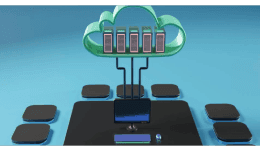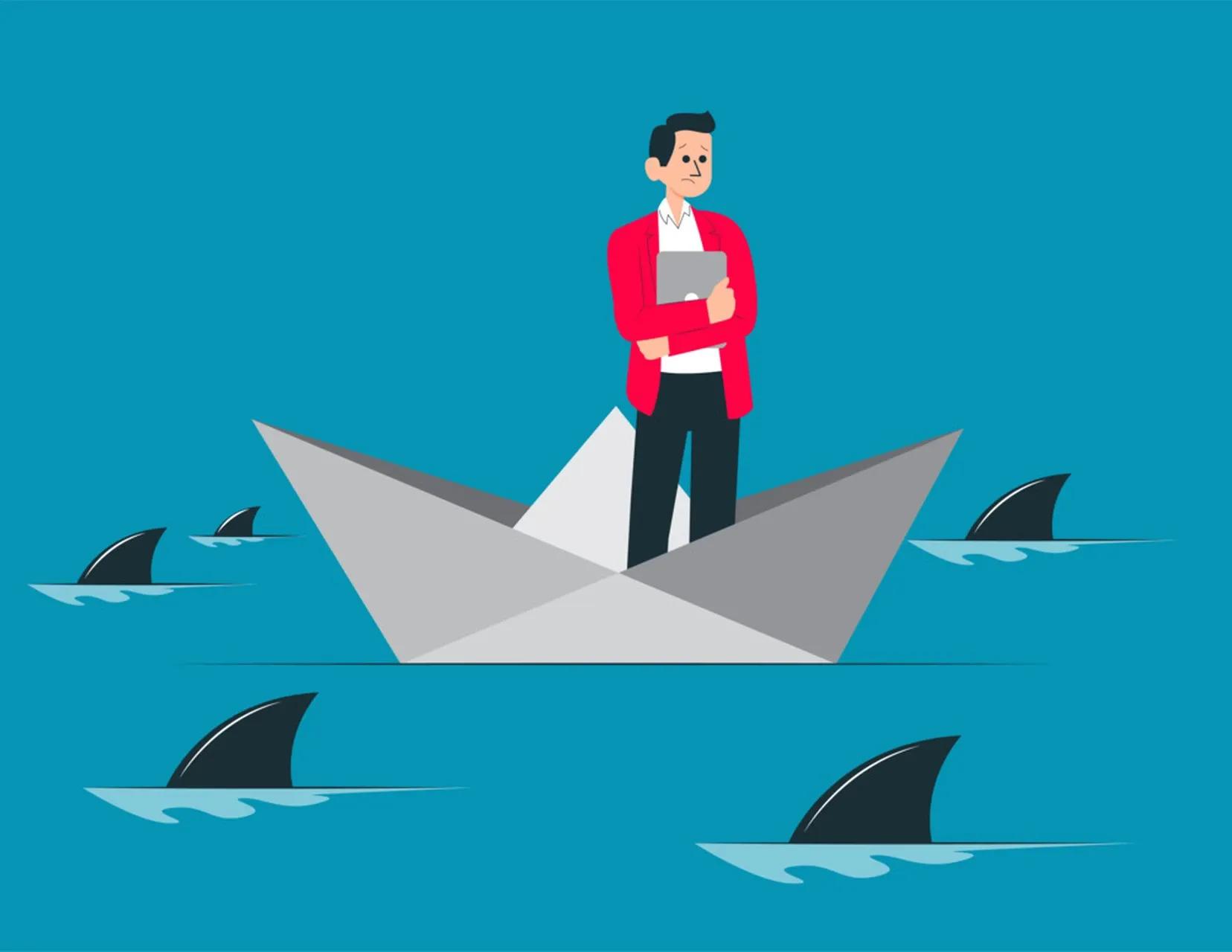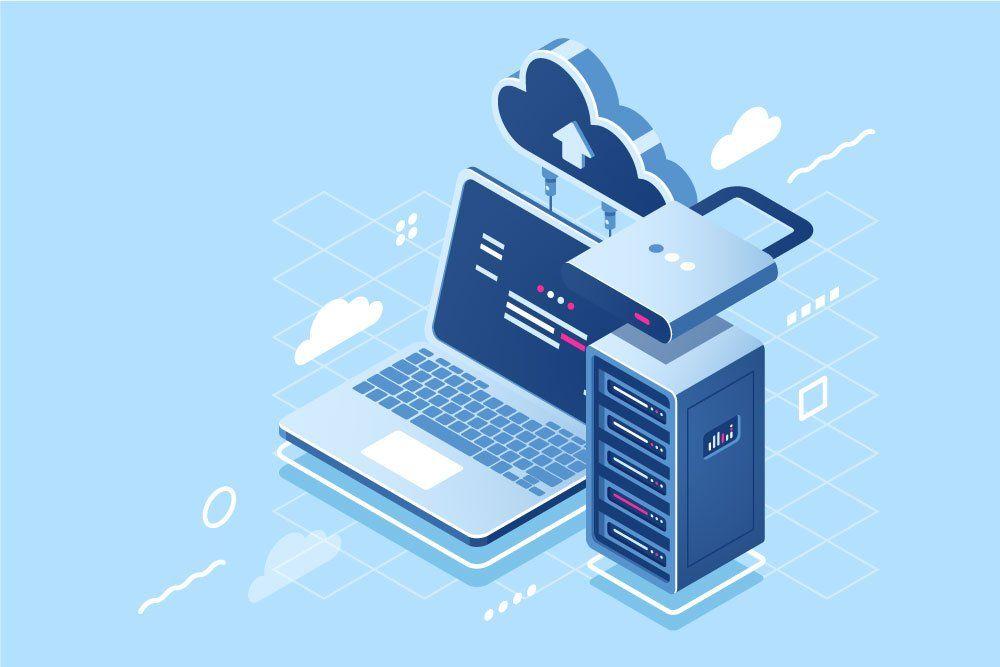手机号码

Anniversary email
An anniversary email is a message sent out to an individual or a mailing list to celebrate a special date or occasion. These occasions can be birthdays, newsletter sign up anniversaries, first-purchase anniversaries, etc.
In this video, the LIKE.TG marketer shares milestone email ideas that you can easily put into practices with our service.
Anniversary emails are usually scheduled to be sent on the month, week or day of the anniversary that is celebrated. These are triggered emails created in advance and sent when a user performs the triggering action. Sending anniversary emails is a chance to keep subscribers engaged and turn them into loyal clients.
Why Should You Send an Anniversary Email?
Anniversary emails are great forretaining existing customers, boosting brand loyalty and encouraging repeat purchases. Providing customers with a special gift to celebrate the day they made their first purchase can go a long way in building trust with your business. This message makes them feel special and builds better customers relationships.
Writing an Anniversary Email
Make it look and feel special
Remember the times together
Use the email to collect customer feedback
Keep the message sincere
Using the right automation tool, you can create customized anniversary emails. Here are some basic things to follow:
Make it look and feel special. From the design and images used, to the gift offered, the email should make each subscriber feel warm and appreciated. For this purpose, craft an outstanding email template to fit your brand's style.
Remember the times together. Get personal by prompting the recipient to think back their time with the brand. It’s an excellent way to remind them why they joined you in the first place.
Use the email to collect customer feedback. Instead of giving a gift, a business can also use this chance to collect customer opinions and reviews. After all, good communication creates stronger relationships.
Keep the message sincere. Apart from showing appreciation, an anniversary email should be honest and straightforward. Use a warm and friendly tone.
Sending an Anniversary Email with LIKE.TG
Select Automation360
Add the General Information
Create an Anniversary Email Campaign
In LIKE.TG, you can set up and send an anniversary email campaign. Here is the example of the way to congratulate subscribers one year after their first purchase. Follow this 3-step guide!
Step 1: Select Automation360
Registerwith LIKE.TG if you still don’t have an account. Go to “Automations” and choose “Automation360”.
Step 2: Add the General Information
Enter your automation name, choose an email sender, date and time for sending and select the language for your unsubscribe form.
Step 3: Create an Anniversary Email Campaign
Select the necessary mailing list. If you collected the addresses long ago and haven't emailed them yet, we strongly recommend you check them. Some of them can be invalid, so to avoid the spam folder, validate them with our free Email Verifier.
Choose the event “Purchase” and the email will be sent after a purchase triggers the automation. After that, drag “Email” to the working field. Set the number of minutes/hours/day to send it, write a subject line and select an email template. Apply and save. That’s all!
Get more insights about sending triggered emails in this guide.
If your mailing list contains up to 500 subscribers, send 15000 emails every month for free!
Anniversary Email Ideas and Tips
To perfect your anniversary email campaign, here are a few tips and ideas to keep in mind:
Send anniversary emails to congratulate subscribers on various events like a year after the signup, three years after the first purchase, ten orders made in your store.
Segment your audience and send different emails based on the customer’s gender, age, lifecycle, preferences, and other important factors. That will ensure a personalized approach.
Offer different gifts based on previous or future customer interaction. Provide your most loyal clients with significant offers to keep them highly engaged.
Provide customers with time-limited offers to increase impulsive sales.
Use the customer’s past buying history to cross-sell products they have recently bought.
Increase brand awareness with the help of contests. Offer your customers a special gift for taking part in a contest, encourage them to share photos on socials and tag your brand. Thus, you will not only have fun but grow your audience as well.
Anniversary Email Examples
Asos offers a client a 10% discount on the 1 year anniversary of their first purchase.
Grammarly’s email celebrating the recipient’s one-yearsubscription to the service.
Zumiez offers free shipping on selected orders to celebrate Mickey Mouse’s 90th anniversary.
Habitat sent this email to celebrate a 1-year anniversary since they launched their Click Collect delivery service.
Send anniversary email

Announcement email
An announcement email is a message that a business sends to their contacts to tell them about a new product release, recent update, or an upcoming event.
Announcement emails provide details about something significant that isgoingto happen. An announcement about a new product first starts with a teaser, then the official announcement, and finally the launch. An announcement email’s subject line should be intriguing to entice subscribers to open and read what is inside.
How to Write an Announcement Email
Email provides a great avenue for businesses to send service or product announcements to customers. In a great announcement email you need to describe the following information:
The event. State clearly what the email is about. It is best to use a short and attractive email headline and subject line. Accompany the text with an eye-catching picture.
The benefits for the clients. Perhaps the most important aspect of writing an announcement email is to tell the audience why the message is important (i.e. how they will benefit from your product or service). Talk about how your product or service will solve their problem.
Briefly describe the product, service or upcoming event. While customers don’t need to know everything about the product, they need to know what new value is being offered from your new product, service or event. Stick to the features that are likely to elicit people's interest.
The desired action. Every marketing message should end with a call to action and a link that recipients can click on to go to the relevant page. For example, include something like, “Buy now” or “Learn more.”
How to Send Announcement Emails with LIKE.TG
If you want to create a single email campaign, just add your mailing list, edit the template, configure the settings, and send. Follow this step-by-step guide.
If you need to send several email campaigns to remind your clients about an upcoming event, make use of Automation 360. It allows you to set up automated emailcampaigns according to subscriber actions and variables. For this purpose, choose the “Special date” event, select the mailing list, set the date and time for sending, and craft the template. If your announcement is extremely important or urgent, you can set automated SMS sending for clients who haven’t opened an email.
Announcement Email Examples
Check out this cosmic email from New Balance. The brand announces a new product launch inspired by space.
Boden sends an announcement email to inform the clients about Cyber Monday sales. They sent a reminder email before the sale ends to engage more clients.
Kate Spade invites customers to their store to buy classy leopard clothes, enjoy limited edition prints, pins, and nail stickers. Besides, the brand provides clear CTAs that help users find the answers to all their questions regarding the event.
Announcement Email Best Practices
Follow these announcement email best practices for better audience engagement:
Send the announcement 5 days before the launch, in 2 days and on the launch day.
Accompany the announcement with an enticing visual.
Provide your clients with the benefits of using your new product or visiting an event.
Send the announcement to a relevant mailing list segment.
Encourage recipients to open the email with a captivating subject line.
Send announcement email

ARPU
ARPU (average revenue per user) is a vital metric, especially for subscription-based services. It allows product owners todetermine the revenue they get from both paying and non-paying users during an accounting period. With this measure, you’ll have a clear picture of the value your business provides.
In this article, you’ll get to know why ARPU is important, see the difference between this metric and LTV, and learn how to calculate and increase it.
Why is ARPU important?
Generally, average revenue per user allows companies to evaluate their financial potential, and hence, they have a basis for predicting profits. Since “a user” in this context is every client who uses your services regardless of their subscription type (free, basic, premium), you can have a clear picture of your revenue and the value you provide.
ARPU has no exact standards, and everything depends on your business and the industry. Let’s have an example.
Say, your company offers a forever free plan and also three pricing plans — $8, $20, and $50. You’ve calculated the ARPU, and it is $25. It means that the majority of your clients are ready to pay more than your cheapest plan costs. Take into account the fact that the biggest part of almost any SaaS is made up of customers using it for free. However, the majority of your clients choose an expensive pricing plan.
This example reflects the value you provide your users with. If you find out that your ARPU is very close to the cost of the most expensive pricing plan in your service, it means that people can afford it and want to pay more.Perhaps you should consider creating an advanced and more expensive plan to provide them with the services they need and blow up your revenue.
If your ARPU reaches the medium-priced plan, raise your prices without any doubt. If this metric amounts to your cheapest plan, you should focus more on your marketing and promotional strategy. The chances are that people have no idea why they should pay more for your services.
As you see, this measure brings a lot of insights to business owners. The high average revenue per user means that you’re moving in the right direction, and your clients love and appreciate your product. In addition, ARPU makes it possible to evaluate your financial situation for investors and analyze your promotional campaign’s effectiveness and your clients’ reaction to the changes in pricing. Remember that the ARPU of a healthy business grows due to new paying customers.
There’s a marketing metric very similar to ARPU — LTV. These two measurements are equally important yetsomehow different. Let’stake a closer look.
ARPU vs. LTV
LTVis a customer lifetime value. This metric shows how much money a client brings you during their relationships with your brand, while ARPU means the average sum of money a user brings during a specified period, for example, a month. Hence, the difference lies in the time periods used for calculating these measures. Generally, LTV reflects the value of a client for your business, while ARPU helps you realize your company’s current situation.
Both metrics are important and interconnected. Remember that the more chances your clients have to spend money on your service, the higher your LTV will be. It’s time to learn how to calculate ARPU for your business.
How to Calculate ARPU
ARPU is calculated by SaaS, mobile app owners, any services that work on a subscription basis, andsometimes even online stores. Ecommerce companies only use ARPU as an average revenue per unit. They calculate the revenue per product to have a clearer picture of their business performance.
Generally, the formula looks the following way:
ARPU = Total revenue for a specified period/Number of customers
The time period ismost often a month since users are usually billed monthly.
For example, 500 users chose your plans in the previous month, and your revenue was $3000. Therefore, your average revenue per user is $6 (3000/500).
When choosing the time period, mind how often your clients need your services and when they are billed.
In the last section, we’ll share some tips that will help you increase your ARPU.
How to Increase ARPU
We’ll offer some effective tips that any business can implement.
Segment your users. Segmentation allows companies to better understand their customers, their needs, problems, and preferences. Find out what your best-selling products are to analyze your buyer persona and see some common patterns. Divide all your clients into groups, and create the pricing plans accordingly. You can start from plans that fit small, medium, and large businesses. This way, users will choose the best plan for their needs.
Analyze your pricing plans.Identify your best-selling and worst-selling plans. Monitor which features in each of your pricing plans clients use most frequently and which they never use. This way, you’ll find out which options they don’t actually need and, as a result, are not willing to pay for. Create your plans based on customer segmentation.
Make use of cross-selling and upselling. These techniques allow marketers to increase their clients’ average bills. Think of some bonuses and perks you can add to your existing plans to provide better value. Study the needs of your users carefully to reveal their pain points and features they may need to have in a bundle.
Look for growth hacking opportunities. They allow companies to find cost-effective techniques to increase customer loyalty and trust, keep clients engaged, and improve market share. Think of developing cost-effective features that don’t require a lot of resources but will provide users with additional value. Add them to your current plans, and don’t forget about proper marketing. People should understand how your new launches will help them work more effectively.
Increase prices. This is the easiest and most obvious way. However, make sure that your ARPU reaches your medium-priced plan in this case. It means that people realize your value and are ready to pay more.
Congrats, now you know why ARPU matters, how it differs from LTV, and how to calculate and increase it.

API
API is used to integrate LIKE.TG’s distribution service capabilities with clients’ personal projects. It simplifies things for developers.
All popular email services have arefinedAPI, that allows you to automate practically every stage of sending out your mailings and receiving reports.
The Purpose of an API
API typically is used to integrate one system with another to synchronize them and exchange data. For example, if a user registers on your site and you want to implement email subscription with new registrations, the LIKE.TG API helps you easily accomplish this task. Our API is also used to develop third-party applications. Thereby you can develop your own application for LIKE.TG and manage mailing listswithout visiting our site. LIKE.TG's API interface has a range of opportunities that you can implement in your business projects.
For the authorization process you must obtain a key that can be found in the API tab in the private account settings page.
You can read more about LIKE.TG API here.

Augmented product
An augmented product is an additional benefit or special service supporting the main product. Sellers use this method to provide their clients with additional value for free. Offering a warranty is an example of product augmentation.
In this article, we’ll unveil the advantages of having an augmented product and provide some examples.
Benefits of Product Augmentation
Each product is sold as a complex of three components: a core product, actual product, and augmented product. A core product implies specific experiences or benefits a client will get when using it. For example, a cyclocross bike allows its owner to ride through muddy fields, grass, and even sand. An actual product means selling this particular bike of a certain brand that delivers its features perfectly. An augmented product means providing additional features or services for free.
Brands use product augmentation to provide their customers with additional value. It means that clients get the main product along with some perks at the same price. This helps companies gain a competitive advantageandincrease their market share.
Actually, this is a win-win for both parties. Customers get some extra benefits or upgraded services for the price of a single product. As a result, companies manage to provide a great customer experience that helps them increase the number of loyal clients. It’s essential that the price of an augmented product doesn’t exceed its unit costs.
Almost all expensive products come up with augments products. Let’s take a closer look at the examples.
Examples of Augmented Products
You’ve definitely experienced this marketing technique when buying a washing machine, a phone, or booking a hotel room. We’ll share some examples and ideas for product augmentation.
Product warranty. This is the most popular way to augment a product. This way, a company makes a promise to fix a certain item if it breaks down in a specified time period. You’ve got it when buying household appliances, for example, a fridge.
Installation. The companies have some technicians in their staff who can install or configure a product for free, for example, a washing machine or a TV set.
Free delivery. It belongs to widely used ways for augmenting products as well. Brands from different industries make use of this method. It’s especially popular in the furniture industry, where clients make expensive purchases and are offered free delivery. Restaurants and e-stores provide free delivery for clients’ orders starting at N-price or on special days.
Refund. Some businesses provide a refund option during a specified time period if a product doesn’t meet their clients’ needs.
Updates. They are common among online services and software products. Users are offered free and timely updates to their products since the chances that they will buy them then are low.
Product trials. This tactic is used by online services to engage more clients. Users are offered to test a particular service for free during a specified time period. This way marketers expect that leads will want to continue using a product and, as a result, buy it.
Free samples. They are popular both online and offline. Cosmetics stores usually give their clients free samples if they spend a certain amount of money on their purchase.
Other examples of product augmentation include offering earphones together with a mobile device, a carry bag — with a laptop, free communication with an expert when buying an educational course, donating a certain amount of money to a charity, discount for the next sale, amuse-bouche at a restaurant, shuttle and dry cleaning services in the hospitality industry.
Now that you know the benefits of product augmentation, think about additional value you can bring to your customers.

Archive page
The function of thecampaign archive is to show users all your previous emails in order to arouse their interest to subscribe. The emails in the archive can be shared via social networks. Thus, thecampaign archive may help you get new subscribers.
This is what a newsletter archive looks like:
To begin, you should set up the campaign archive. Here is a guideon how to do it step by step. After you set up the archived version of your email campaign, you’ll be able to copy the link from your browser’s address bar to share it online. Users who see your email in their web browsers can share it on social networks with the help of the archive bar.
What is the purpose of the campaign archive?
Thecampaignarchive was developed to strengthen the effectiveness of your email marketingvia sharing emails through social networks. If the content of your emails really engages the reader, then it maygo viral. This means that one person forwards the email to their friends, they do the same, and then other people have the potential to share your contenton worldwide scale.
To achieve the viral effect, you need to create emails with fresh content. Most emails that become viral involve humor and emotion. Create yourcampaign archive in such a way that users want to share it.

Ambush marketing
Ambush marketing is a strategy that involves a brand team trying to associate their products or services with a big event that already has official companies-sponsors. In most cases, it happens during sports events and aims to raisebrand awareness of a particular company with no sponsorship rights.
Why do businesses use ambush?
The majority of ambush campaigns have one aim, which is to associate their company with the fame of a certain event without signing a sponsorship contract. Ambush marketing presents a rather unusual approach to creating a marketing campaign and, at the same time, includes full creative freedom and flexibility.
Brands use various visual forms and wordplay to respond to marketing campaigns created by official sponsors of an event. Since such campaigns are extremely entertaining, they are more likely to attract the masses and are easy to remember.
With this strategy, companies often employ methods that go beyond the scope of a brand's established guidelines. You can use ambush marketing in different ways, starting from PPCads in search results to giant billboards on the most crowded city's streets.
Now that you know some of the benefits your brand can reap after implementing ambush marketing, it's time to find out whether it's lawful to use.
Is ambush marketing legal?
By using this marketing technique the wrong way, companies can get involved in unlawful actions such as infringing the event owner's trademarks, copyright, and other rights of a particular event. However, if implemented correctly, it can bring several benefits to your business, which some famous brands have proven true.
When developing an ambush marketing campaign without any official right to use an event for your promotion, don't:
use actual names, logos, slogans, or brandingof events;
mention words "Sponsor", "Partner" or "Supporter" concerning this event;
conduct giveaways and give people tickets to the event.
Since it's trendy in sports, many actions are directed against this marketing strategy in this industry. These measures can be found in major sports events that aim at protecting exclusive sponsorships and their organizers' intellectual property rights. As a result, these regulations can limit the freedom of speech and obstruct brands from promoting themselves with the help of a certain event.
It's crucial to follow several steps to legally and successfully implement this creative marketing technique without violating various rights. Let's dive into the pros and cons of ambush marketing if you are considering it for your next marketing campaign.
Advantages and Disadvantages of Ambush Marketing
Like any marketing strategy, ambush advertising has advantages and disadvantages. Let's take a closer look at them.
The advantages are as follows:
cost-effectiveness;
improved brand equity;
freedom and flexibility;
an opportunity for startups to jump-start their business;
a higher competition that brings lower prices for consumers;
a creative approach;
a direct response to a campaign;
various forms and sizes, starting from a mobile sidebar ad to huge billboards in a city center;
companies can go off-script from their initial content, style, etc.
All marketing methods have drawbacks, and this approach isn't an exception. It has the following disadvantages you should be aware of before implementing it:
makes it difficult to calculate ROI;
requires quick response and detailed planning;
relies on time and space;
violates the rights of actual sponsors and partners of an event;
relies solely on competitors' ads to address them.
Knowing the advantages and disadvantages allows you to decide whether this marketing strategy suits your business. The next step is to determine which type is the best for your brand.
Types of Ambush Marketing
The strategy can be divided into two main types:
direct marketing;
indirect marketing.
In direct ambush marketing, a brand's team aggressively uses various activities to associate themselves with an event without being a sponsor or partner. There are four types of direct marketing:
predatory ambushing is a technique that includes one brand attacking another (an official sponsor of an event), which prevents people from identifying an actual sponsor;
coattail ambushing is a strategy where a brand aims at gaining exposure by becoming a sponsor of a person who participates in the event;
property or trademark infringement is when a brand uses logos, symbols, or phrases of another brand to promote its services that often leads to confusion among customers and diminishes the marketing efforts of the property's owner;
self-ambushing means that a brand has sponsorship rights but gets involved in activities not mentioned in the contract.
Let's review self-ambushing in more detail. The situation with the 2008 UEFA European Championship and Carlsberg is a great example. The famous beer brand, an official sponsor, did something not stated in their sponsorship contract. During the tournament, the brand gave out free T-shirts and headbands.
Indirect ambush marketing doesn't necessarily involve association with an event but rather tries to align a company through a suggestion or reference to it. This strategy doesn't include a brand that attacks another brand but allows you to gain exposure.

Ambient marketing
Ambient marketing is a way of promoting products or services using unusual locations or items and their elements to your advantage as a communication channel. It involves creative advertising messaging, interacting with the target audience, and should affect consumers on an emotional level.
In this video, you can see an ambient marketing campaign from Coca-Cola. The company put a special Coke machine at a bus stop in a Swedish city.
Why should brands consider ambient marketing?
According to MarketingWeek, 65% of UK consumers say that diversity in advertising formats is important to them. This indicates that modern marketers think not only about traditional ads but non-standard ways to promote their products as well. When conventional advertising is no longer surprising enough, ambient marketing comes to the rescue.
The term ‘ambient media’ appeared in Great Britain in the 1990s and was defined as visual advertising in uncommon places. When developing an ambient ad, paying considerable attention to creativity and using an unconventional approach to provide deeper contact with prospects and customers is important. It is important that people passing by stop, look at it, and tell their friends about what they saw.
Ambient ads are considered a more effective product promotion than conventional outdoor advertising. Studies have shown that billboard advertisers have a vehicle passenger’s attention for about six seconds, while creative advertising can increase this indicator to a minute or even more. Also, it helps improve the ad’s effectiveness and can be an integral part of social media marketing. On the one hand, brands can create an unconventional ad and share it on social networks using a hashtag. On the other hand, people can take pictures, make videos of this creative advertising and share it on social media using the brand's hashtag, thereby building brand awareness.
Now that you know why companies should use ambient ads in their campaigns, let’s walk you through the benefits of this type of brand promotion.
Advantages of Ambient Marketing
Grabs attention
Can go viral
Low cost
Non-intrusive
Reaches a wider audience
Memorable
Creative ambient ads that convey a strong message are unique in design and appear in unexpected locations to make people talk about your brand. Here are several benefits of using ambient marketing for your campaign.
Grabs attention
In our modern world, where there is an incredible amount of advertising, it is really difficult to stand out to attract prospects or customers. That is why companies should come up with something brand-new and unique.
It is a well-known fact that to grab people’s attention, you should create a positive emotional feeling, surprise consumers, and build an emotional roller coaster. Here comes ambient advertising that can draw attention by creating interesting objects, unusual billboards, and useful items, and placing them in unexpected locations.
Can go viral
If your ad affects people emotionally and has distinctive features and practical value, it can easily go viral. In a world shaped by technology, people can easily take photos and videos and share them on social media like Twitter, YouTube, Instagram, and Facebook. This is how you can expand your audience. This doesn’t mean that it can immediately boost your sales, but it can boost your brand recognition at the very least.
Low cost
An ambient ad is about using unconventional promotional methods to engage with the audience. This means that it won’t cost you much to implement such advertising into your marketing strategy. Find a creator for your future ambient ad and decide on a perfect location.
Non-intrusive
One of the main benefits of ambient ads is that they convey a brand's message clearly and don't enter customers’ personal space. With some unique constructions, murals, and unusual objects on the streets, you can’t make people become your customers. However, if you manage to intrigue people passing by, they may tell others about your brand. Their friends and colleagues are more likely to purchase your product of their own free will.
Reaches a wider audience
Usually, marketers choose popular places or busy streets to put their ambient ads. The more people see it, the better for a brand. With the help of this type of marketing, you can reach not only your customers but also prospects or people just passing by. The object that conveys your marketing message can build brand awareness for different audiences.
Memorable
Ambient ads allow people to see your brand from a completely new side. Such campaigns evoke strong emotionsusing experimental promotion techniques, so consumers remember a brand. Sometimes this form of advertising can evoke emotions such as shock or fear to achieve brand awareness.
Let's look at several ambient marketing examples from well-known brands. This will give you the opportunity to see this type of marketing in action.

AI marketing
AI marketing is a type of marketing that applies artificial intelligence to collect, analyze and obtain customer insights for further marketing efforts. Marketers manage to improve their content, personalize buyer journeys, learn customer behavior, and provide excellent service. Examples of AI marketing include chatbots, targeted advertising, automated email campaigns, content generation, content personalization, etc. Consider using LIKE.TG to create chatbots and send automated email campaigns with Automation 360.
In this video, Anya explores the latest advancements in AI marketing, shedding light on 4 key trends and technologies shaping the industry.
In this article, we’ll unveil the benefits and examples of AI in marketing. We’ll also uncover how companies use it and how to do it in LIKE.TG.
Benefits of Using AI in Marketing
AI in marketing, such as chatbots, automated email campaigns, and targeted advertising, helps improve your company’s ROI. Campaigns created with AI are more effective and easier to monitor. Tracking campaigns enables you to identify issues and eliminate them instantly. Campaigns are personalized and crafted based on customers’ preferences, needs, and problems. Data analytics allows you to produce better content and improve it in seconds. This way, you can avoid additional expenses on hiring specialists and reduce the workload on your team members. They can work on more urgent tasks and improve productivity.
With AI, brands can provide personalized experiences to their customers. Email campaigns and highly targeted ads allow companies to send offers based on clients’ preferences, needs, and shopping history. Customer behavior, search history, and shopping lists empower you to send personalized recommendations with products buyers are interested in. Automated email campaigns help you establish trusting relationships with audiences and encourage them to purchase. Moreover, you can prevent customers from churning out. With AI marketing, you can identify such clients and engage with them by using email campaigns.
AI tools enable you to grow your business faster by making well-thought-out decisions. You can do it by receiving and analyzing essential marketing data. Automation empowers you to engage with clients at every stage of their customer journeys.
Now that you know the pros of using AI in marketing, it’s time to find out how brands use it to their advantage.
How do companies use AI in marketing?
Lately, AI is one of the topics actively discussed in marketing. More and more brands implement artificial intelligence for better team productivity and effectiveness of marketing campaigns. Let’s discover in what areas you can apply this technique and achieve your main business targets.
Content personalization. With personalization, the effectiveness of your marketing increases. You can do it automatically with special AI services. It enables you to send content to customers based on their behavior, shopping history, wishlist, and browsing history. This way, you’ll be able to reach prospects and existing clients with a highly targeted offer. It makes it harder to resist a purchase. You can also send messages using your customer’s data, making the conversation more personal. When you figure out what customers are looking for, you can provide highly targeted offers and help them solve their problems faster.
Content generation. Content generation isn’t a problem at all with AI. With its help, brands add social media posts, identify the right keywords and captions, and write email subject lines. Moreover, ChatGPT allows you to create quality blog copies without your team's involvement. Provide the subject line, and AI will create an article for you. However, you still need to double-check the article's content before publishing it. Ensuring that the post complies with your requirements and contains the right information is necessary.
Automated email campaigns. Automated email campaigns help your team avoid spending time researching your target audience and deciding what to write in email campaigns. You can create engaging email campaigns and send them to customers based on their preferences, wishes, and needs. As a result, customers are happy with your offers, and your company gains more sales.
Data analytics. With AI, you can analyze and use large amounts of data. It helps collect data from multiple campaigns and analyze them. Doing so lets you find out what works and doesn’t with your customers. As a result, you can create effective marketing campaigns that bring you closer to achieving your key goals. You can also predict the outcomes of future campaigns by analyzing customer engagement, email open rates, and time spent on specific web pages.
Media buying. If you want to effectively place your ads and promote products, consider using AI. It helps predict the best places to put ads. This way, you’ll be able to reach your potential clients and improve ROI. By using a special tool, you can receive recommendations regarding your ad spend.
24/7 customer support. With AI chatbots, your company will be able to assist 24/7. Potential customers will receive instant answers to their questions. Customer satisfaction with your brand will increase. Besides, chatbots help reduce the workload on your team and ensure instant responses. This way, you make sure your prospects get an answer quickly.
Customer experience. Personalized content and instant support improve customer experience. Excellent customer experience is vital when we talk about marketing. It influences consumer decisions. If leads are satisfied with your support, content, and overall experience, they are more likely to purchase. When they buy, they increase the profitability of your business. Creating customer experience positively affects customer loyalty and repeat purchases. Customers who are happy with your brand are satisfied with your product.
Sales forecasting. AI technology enables you to calculate the approximate income after implementing specific campaigns. This way, your company can determine whether running this or that marketing campaign is profitable. It will help you figure out whether the sales will cover the costs for the campaign and bring pure revenue.
SEO. AI technology is perfect for search engine optimization. Special tools empower you to optimize content to comply with search engine algorithms and search for appropriate keywords. This, in turn, helps improve ranking and understand competitors’ situations. Moreover, AI allows you to identify customers’ interests and create content to match their requirements.
Now that you know how to use AI technology to your advantage, it’s time to find out how to use AI in LIKE.TG.
How to use AI in LIKE.TG?
In this section, we’ll unveil how you can use AI in LIKE.TG, a multichannel marketing platform. Let’s find out the benefits of using the service for your company.
LIKE.TG empowers you to create chatbots for various channels such as Instagram, Telegram, WhatsApp, and Facebook Messenger. After creating the bot, you can easily connect the GPT model from OpenAI. The integration is available within the service. ChatGPT allows you to provide your users with even more proficient automated replies and help them solve additional tasks.
In LIKE.TG, you can integrate one of the available models: Curie, Davinci, Ada, ChatGPT, ChatGPT (gpt-3.5-turbo-16k), GPT-4, and Custom Fine-tuned model. Davinci is perfect for analyzing complex intent and cause-and-effect problems, summarization, and explaining and generating code, while Curie will suit those who deal with translation, complex classification, text sentiment analysis, and summarization. Incorporate the ChatGPT model if you want to generate replies for messaging apps and virtual assistants and implement QA systems. The language of the bot will be natural and human-like.
Now that you know how to use LIKE.TG for AI, it’s time to jump into some examples. The following section will help you figure out how the technology works in practice.
Examples of AI Marketing
To unveil how AI technology works in real life, let’s review some famous brands and the way they incorporate this approach. After this section, you’ll be inspired to apply AI in your business.
Spotify
The famous digital music service uses AI to understand the preferences of its listeners and provide personalized experiences. The technology helps Spotify identify the music preferences of their users and provide recommendations based on their most listened songs, podcasts watched, purchase history, location, and other criteria. As a result, the user gets a customized playlist that covers all the songs he is interested in.
Although personalization helps this streaming service by providing the best experience to listeners, their marketing efforts don’t end there. The company uses automated email campaigns to deliver personalized recommendations. This way, Spotify makes sure that the client will notice their efforts. By sending specific messages, the platform increases the likeliness of conversions.
Netflix
The well-known media streaming platform does everything possible to provide customers a seamless experience. Netflix uses a similar approach to Spotify and recommends movies based on clients’ preferences, movies watched, and interests. This works perfectly for those who want to watch a new movie but have no idea what to choose. The service will do all the work by analyzing preferences and providing films based on various criteria. For instance, people who prefer drama will receive a list of the latest Netflix drama releases.
Below you can see what it looks like.
Amazon
The place for millions of products, Amazon is a company that uses AI for analyzing available information and predicting future sales. Once a user visits Amazon, he will see recommended products. These items are selected based on predictive analytics, which helps figure out how likely specific customers are to purchase this or that specific item. This way, Amazon’s team knows which products should be in the recommendations field.
Below you can see an example of a recommendation based on browsing history.
Congrats, now you know what AI marketing is and why it’s essential. Look through the examples above to get inspired and implement the technique into your business strategy.

Affiliate marketing
Affiliate marketing is an online marketing system that allows any online business to affiliate themselves with website owners (affiliates) using affiliate programs. Affiliates make money from new leads and customers, and by generating sales and traffic for the business.
Follow this step-by-step guide below to get started with affiliate marketing today.
Merchants who sell goods and services online use one of the following commission payment models:
Cost Per Sale
Cost PerLead
Cost PerClick
Sometimes, affiliate marketing is confused with referral marketing, because both systems are used to generate sales.
With LIKE.TG, the system of affiliate marketing is not applicable, but we have a referral program that allows you to earn money when you invite your friends to use our service.
Immediately after you become our subscriberyou will receive a unique link. You can send it to people who are interested in using LIKE.TG. They’ll appreciate your offer because we have one platform for both email marketing and transactional messages. It is possible to send emails, webpush notifications, and SMSmessages. If they agree to be partners you then will receive $50 off your first five payments and get a $50 bonus added to your account.
This affiliate marketing program gives financial motivations to LIKE.TG’s subscribers. Don’t miss a chance to receive bonuses in your account. Invite your friends, colleagues, and partners to use LIKE.TG.
Let’s get benefits together! Learn about this program here.

Advertising media
Advertising media is a wide range of channels aimed at promotion. Brands use various advertising media to communicate their message to potential customers. The right channels help companies increase sales and build long-lasting relationships with their audience.
Why is advertising in the media important?
Advertising in the media is crucial for every brand. Each channel is an intermediary between a brand and its customers. Finding a perfect channel allows brands to present their product successfully, communicate their value, and maintain trustful relationships with the target audience.
With the correct channel and well-thought-out advertising message, companies build brand awareness, create buzz around their brand, showcase and demonstrate the benefits of their products, increase their sales volume and revenue, and collect clients’ personal information that allows them to craft highly relevant and personalized offers.
To reach these goals, you need to choose the best channel or a mix for your brand. So, let’s discover the types.
Types of Advertising Media
We’ll divide all advertising media types into online and offline channels.
Offline advertising media include the following channels:
newspaper advertising;
TV advertising;
radio advertising;
leaflets and flyers;
brochures;
posters;
direct mail;
business cards;
different types of guerrilla marketing (ambush marketing, ambient marketing, undercover marketing, experiential marketing).
Online advertising media offers a wide choice of channels which include the following ones:
social media;
email marketing;
PPC advertising;
chatbots;
SMS;
web push notifications;
podcasts;
landing pages;
contextual advertising;
video marketing;
Big brands often combine these channels to better approach each customer. Such a mix is called integrated marketing communications. This strategy allows companies to reinforce their marketing efforts and ensure the best user experience.
Now let’s see how brands use different advertising media channels to promote their products.
Advertising Media Examples
Forever 21 enjoys the benefits of email marketing. They sent a promotional email to their customers to announce the upcoming sale dedicated to Mother’s Day.
With LIKE.TG, you cancreate and send this kind of email campaign without any technical skills and for free.
SMS advertising is the perfect choice for local businesses. If you have an offline store, don’t miss your extra opportunities to inform customers about new arrivals and hot deals. Domino’s does just that. They invite clients to get a 25% discount in the next two hours.
LIKE.TG allows you to create promotional SMS and send them to your audience easily.
With PPC advertising, you can drive high-quality traffic to your website and boost sales. Using this channel, you will pay the search engine a fee when a user clicks your ad.
Look below to get a better idea of how your advertising will look on the search engine results page. It attracts attention immediately, so users interested in your products won’t ignore them.
Congrats, now you know a lot of advertising media types, so it’s time to choose a perfect channel for your business. Make the most out of the LIKE.TG promotional tools to bring your company to the next level.

After-sales service
After-sales service is the support a company provides to customers after they’ve already bought its product. It encompasses customer onboarding, customer service, product training, warranty service, returns, and exchanges. After-sales service enables brands to increase customer satisfaction, customer loyalty, and encourage word-of-mouth promotion.
In this article, we’ll uncover the importance, types, and examples of after-sales service. We’ll also review tips for the effective implementation of the strategy.
Why is after-sales service important?
Although improving the pre-sales experience is more profitable, businesses should ensure excellent support for customers who have already purchased a product since the prosperity of a company depends on regular clients. After-sales support allows brands to benefit. According to statistics, 96% of consumers will leave if a company provides bad customer service. However, if it succeeds in giving customers the after-sales service they deserve, this business can increase customer retention and encourage people to buy again. As a result, a company can obtain repeat customers.
After-sales service is essential for enhancing a customer base. Happy customers can recommend a company to their friends and refer them. Satisfied clients are the most valuable asset since they have higher customer lifetime value. Making clients happy with after-sales support ensures new leads from referral programs and more sales. Since an excellent post-sales experience impacts a brand image, businesses can use it to their advantage. If entrepreneurs build a positive brand image with after-sales support, they can boost conversions, establish customer loyalty, and reduce customer churn.
Now that you know the reasons to consider after-sales service for your business, let’s review the types.
5 Types of After-Sales Service
You can implement various types of after-sales services to meet your marketing goals. We’ll review the most commonly used strategies to increase customer satisfaction.
User training. This type is essential for customers since it helps them figure out how to use your product. Users can understand how everything works with your customer onboarding, training, and educational materials. Onboarding will ensure smooth promotion down the funnel.
Online support. For companies involved in eCommerce, it’s a must to provide online support to assist customers when they face problems with a product. Clients can reach businesses through various communication channels. They can call support, use a chatbot, or social media networks to get help.
Warranty services. Almost every company provides warranty services for their customers. These might include replacing an item or specific parts of a product during the specified period. For example, Apple provides its customers with a one-year warranty and 90 days of technical support.
Upgrades. Companies often upgrade software so that devices can be compatible and serve their owners longer. For example, Apple users can upgrade their software for 4-5 years.
Free replacement. Brands offer to change the product if it doesn’t work properly. Consumers can get a free replacement for a limited time.
Now that you know the types, let’s proceed to the tips for effective after-sales service.
4 Tips for Effective After-Sales Service
Customer loyalty is an essential part of every business's success. We’ve prepared 4 tips to encourage loyalty in the post-sales period.
Provide customers with discounts. Enticing offers always help raise the interest of the target audience. Discounts are effective in the after-sales period. Creating coupons, special offers, and discounts for your customers demonstrates that you care about your audience. Consider creating campaigns for customers who show interest in your products.
Ensure excellent customer support. You should always keep in touch with customers and be ready to assist them. After-sales service requires you to ensure clients with seamless customer service. Use different communication channels so that consumers can contact you any time they face problems. Make use of LIKE.TG’s chatbots for Facebook, WhatsApp, Instagram, and Telegram to provide clients with instant help and answer basic questions about customer onboarding, installation, features, and updates.
Ask for feedback. After clients purchase, ask them about their experience. Customer opinion is crucial for making your business better. With customer surveys, you can evaluate your product’s value, and customer satisfaction and identify problems that need to be eliminated. You need to select the perfect timing after customers perform a purchase with your company. Ask clients about their experience at least a week after they buy your product.
Send relevant content. Consider email marketing to send content that might interest your customers. Your email campaigns can include updates about new releases, discounts, bonuses, and special promotions. They also show your care and let you stay in touch with your clients. Besides, it encourages customer loyalty. With LIKE.TG, you can develop email campaigns to your liking and send them to selected customers at perfect timing. You don’t need any special skills and knowledge of code to create stunning campaigns. Our drag-and-drop editor and free email templates will help you develop them fast based on your requirements. Moreover, you can inform clients about new releases via chatbots, SMS, and web push notifications.
Now it’s time to jump into the examples.
Examples of Good After-Sales Service
Many small and big brands provide excellent post-sale service. They succeed in ensuring a great customer experience and providing visible value for consumers. Let’s review several examples of companies that managed to incorporate outstanding after-sales service.
EPIC Bar
The company takes care of its customers after the sale. There was a case of one of its consumers receiving a bad bar in a box. After contacting customer service, this client had a replacement of a product, additional bars, and a coupon for further purchases. Moreover, the company’s customer service sent a hand-written note showing its care. As a result, customers can feel appreciation and stay loyal.
Suzuki
Suzuki, famous for its powerful motorcycles, provides support through its post-sale programs. Excellent user experience and customer support provide the company with amazing customer satisfaction. Suzuki’s team cares about its customers and makes everything possible for them to purchase a great product that will serve them for years. The brand supports clients with Suzuki’s Guaranteed Asset Protection, Extended Protection, and Tire Wheel program.
Congrats, now you know the tips and examples to ensure a seamless after-sales experience for your customers. Make use of them to develop excellent post-sale support.

Advertising message
An advertising message is an idea an advertiser wants to communicate to theirtarget audience. Its goal is to convince people to perform a certain action, such as registering, purchasing something, or making a reservation.
Why is an advertising message important?
It allows you to skyrocket your brand awareness
It helps keep your customers engaged
It educates your prospects
It helps you understand your audience
It increases your sales
An advertising message is a bridge between your brand and its clients and prospects. Communicating the right idea at the right time and to the right people allows brands to build trustful and long-lasting relationships with their audience. Therefore, developing a killer advertising message can provide businesses with a lot of tangible benefits. Check them out below.
It allows you to skyrocket your brand awareness. Well-thought-out advertising campaigns go straight to the hearts of your clients. Companies that go beyond selling enjoy better brandawareness and recognition. For example, Canon launched a #selfieless campaign on Christmas Eve, which was symbolic. They encouraged people from all over the world to capture not themselves but their good deeds to share altruistic vibes and inspire.
It helps keep your customers engaged. Clients can stop buying from you just because you don’t interact with them. Hence, they simply forget about your company. However, targeted and highly relevant promotional offers will definitely strike the right chord with your audience. They will appreciate that you know their problems and offer the best solutions.
It educates your prospects. Leads are not ready to buy immediately. They may not fully understand the way your service works or how to make the most out of your products. Besides, they can get stuck at any stage of the sales funnel. Via an advertising message, you can offer them solutions to cope with their problems. As a result, you’ll be in the right place at the right time.
It helps you understand your audience. Analyzing the way your leads and customers interact and respond to your messages will provide valuable insights. You’ll get to know which offers, channels, and tactics work better for your audience.
It increases your sales. Each benefit listed above results in a sales increase. If you communicate your message to the right people via the channels they prefer, you can boost sales. Advertising during holidays, clearances, and other important occasions will work in your favor.
Now you know the benefits you can get by using advertising messages. It’s time to move on and explore the components of a killer ad.
Components of an Advertising Message
It doesn’t matter whether you choose online or offline advertising. The structure will be the same because the nature of human perception predetermines it.
Let’s break it down into five components.
A headline. This is the first advertisement element a user notices. It should be eye-catching and informative since it is usually placed at the top of an ad. A headline conveys the main idea of an ad, so marketers need to do their best to create a selling headline. It can be presented as a promise, breaking news, a command, or a question. To make readers read further, it should be short and unambiguous.
A sub-headline.The advertisers sometimes omit this element, but you can’t underestimate its power. A sub-headline can support and continue your headline. It’s usually placed right under it, so it’s difficult to leave it unnoticed. If your headline is a question, a sub-headline can be the answer. These two elements complement each other perfectly. A sub-headline may be longer than a headline — up to a sentence.
Copy.An advertising message copy should answer all the possible questions a user may have after reading your headline and sub-headline. Thisis just the place to showcase your product value.Consider performing athorough analysis of your target audience to sort out the most important benefits that can help solve your clients’ problems and sell your product.
Images. This element grabs second place in attracting user attention to an ad after a headline. Images assist you in visualizing your product, demonstrating its benefits, creating associations, and keeping your customers interested.
Call-to-action.CTA is an action you want users to take after reading your advertising message. It should tell them directly what they should do next to evaluate the benefits of your product. It can say “Buy”, “Visit a website”, “Book a seat”, “Reserve a ticket.”
These are the main components each ad message contains. You can include more elements, butyou have to ensure they don’t distract users’ attention from your message. The shorter — the better.
Now, we’ll share some tips that will help you create a killer ad.
How to Create an Advertising Message
Creating a perfect headline and adding a nice image is not enough. If you create an ad for the first time, you should go through more steps to craft a highly relevant and targeted message. Follow them below.
Analyze your target audience. You can create a great ad in terms of marketing, but it won’t pay off if you target it to the wrong person. Analyzing your audience will provide you with valuable insights. Find out who your target market is, get to know the gender and client’s average age, and learn their social status, education, income level, or place of living. Answering these general questions will make you familiar with your audience and uncover the best promotional channels.
Identify your customers’ pains. Every client chooses your brand because they believe you’re the best choice to solve their problem. Consider conductingresearch to identify your customers’ pain points. You can do this with the help of interviews, polls, surveys, etc. Get to know which unique features they need and can’t find among your competitors’ offers. This technique may be the key to your success.
Select the best advertising channel. Your target audience analysis will tell you about the channels they prefer so that you can invest in them without wasting your budget. You can create ads for social media, paid Google Ads, run retargeting campaigns to reach leads already interested in your product, collaborate with your partners to develop native advertising, and promote your product in YouTube videos. All of these formats are not free. We recommend that you start with email campaigns. LIKE.TG allows you to send promotional emails to 500 subscribers every month for free. You can educate your audience and showcase your product from the best angles via emails.
Master each component of an advertising message. Avoid using clickbait headlines since they can be ambiguous and scare away your audience. Brainstorm all your product’s benefits and include the most attractive ones in your ad copy. Design them as a list so that your users can easily perceive them. Make high-quality photos of your product to add them to your message. Craft a clear call to action. It should be the final chord of your ad. Make sure the link works and is easy to click.
Analyze the results and act on them. Track how users interact with your ads. For example, if you promote your product via email campaigns, a lowopen rate shows that you’ve failed to create an attractive subject line; low CTRindicates that your message doesn’t resonate with the audience or hasn’t met your subscribers’ expectations. These findings will help you improve your strategy.
Now, let’s take a look at some excellent examples of advertising messages.
Advertising Message Examples
In this section, we’ll share some examples of advertising messages from different online channels to help you get inspired.
Sephora
Sephora ran an ad campaign on Facebook to target the users who visited their site and viewed products but left without buying. They focused on Americans interested in makeup and skincare. The brand collected the products a prospect likes according to their behavior on Sephora’s site. After a user taps a specific product, they are redirected to the corresponding site category.
This way, Sephora had reached leads who had not been ready to purchase and increased their sales volume.
Chain Reaction Cycles
The brand offers its email subscribers to get free tires with several wheelsets. They add customers’ reviews to make people trust them. Subscribers can click “Shop now,” and they will be redirected to the necessary item on their site.
Chelsea FC
If you own a physical store, SMS marketing is just for you. Ask your clients to share their phone numbers to receive messages about hot deals, upcoming sales, and special offers for their birthday. This way, you’ll retain customers, increase their loyalty, and boost sales. Chelsea FC does that right. Check out below.
Congrats, now you know pretty much everything about advertising online. Follow our tips, get inspired by the examples, and make use of LIKE.TG marketing tools that will help bring your business to the next level.

Agile marketing
Agile marketing is a marketing approach in which self-organized and cross-functional teams perform tasks and receive instant feedback on their work. It helps companies focus on customer value, brand outcomes, and learning through experiments.
This article will uncover the importance and benefits of agile marketing. We’ll also unveil how to implement it.
Why is agile marketing important?
Incorporating agile marketing into your business is essential since it helps ensure communication and coordination between departments. Shareholders are instantly updated on the project’s progress and can see every step a team takes to succeed. Agile methodology is transparent, so you can see project development and bring improvement. Tests and experiments allow you to find the best solution for your project and provide the best result to consumers. As a result, customer satisfaction improves.
Experiments enable your teams to learn something useful for your project and avoid the same mistakes in the future. Productivity and efficiency of your departments increase. Collaboration between teams empowers you with the insights important for creating a valuable product.
Now that you know the importance, it’s time to proceed to the benefits. After exploring the pros, you’ll be able to decide whether it will help you reach your business goals.
Benefits of Agile Marketing
When brands’ marketing approaches evolve daily, it’s challenging to stay ahead using traditional marketing. Agile marketing enables companies to remain competitive by ensuring effective work of departments, quick reaction to customers’ needs, and changes in marketing trends. In this section, we’ll review the essential advantages of agile marketing for you to consider. They will help you decide whether you need this marketing approach for your business.
Agile marketing helps you improve the efficiency of your business. Below you can uncover the advantages.
Increase productivity. Companies’ teams that incorporate cross-functionality and self-organization report improved productivity of their departments. With agile marketing, you can delegate tasks and divide them among teams to work independently. Every completed task receives feedback. It enables you to make improvements right away. Collaboration between departments empowers you to create a perfect product and find the right approach to consumers.
Adapt to changes and challenges. Agile marketing is flexible and easily responsive to change. You can modify this approach to your needs and cope with unexpected external influences. Once you receive customer insights or other crucial information, you can always adapt your further steps and improve your strategy. As a result, you increase efficiency.
Collaborate with different departments. With agile marketing, members of different teams can become part of various projects. The approach doesn’t limit employees, so they can engage and collaborate with the company’s departments. To ensure proper communication, brands use special tools for interaction and organize cross-functional meetings.
Ensure transparency. Agile methodology allows shareholders to observe each stage of the project. Teams’ decisions and actions are transparent, meaning you can see project development and make alterations if necessary. As a result, teams produce high-quality work with minimum drawbacks. Teams make well-informed decisions that bring you toward a valuable product.
Assess results. Since the agile approach is open to experimentation and change, you can always evaluate the results of your teamwork. Once you finish the assessment, you can think of the improvements. You can discuss the details with your shareholders to determine the key weaknesses and take action. Consider using tests and experiments to understand your product and strategy clearly. You might need to invest more resources into your email campaigns or advertisements to create buzz around your product or work on the product’s features.
Now that you know the advantages of the agile approach, let’s discover how to implement it for your business.
How to implement agile methodology?
If you’ve decided that agile methodology will suit your company and team perfectly, stick to our step-by-step guide to incorporate it correctly. We’ll review each of the essential steps in detail.
Ensure collaboration with all members of your team. Since agile marketing implies communication and transparency, you should update all key members of your company on the situation and plans. The project team, stakeholders, and customers need to be connected. To prevent your team from having any problems, you need to discuss the details of your project and uncover all concerns. This way, you’ll be able to talk about the methodology, answer critical questions, and address inquiries.
Focus on one project. If you’re just starting with agile, it’s worth trying it with a small project. Take one project first to test your team and its ability to perform cross-functional tasks. Once you finish this project, evaluate the results and feedback. If you complete all the tasks, you can use all the techniques and approaches for your next project. By implementing tests and experiments, you’ll be able to find the best scenario for your team’s effectiveness and productivity.
Encourage your team to bring excellent results. Communication and collaboration are the two fundamentals of agile methodology. You need to ensure communication between decision-makers to solve problems and bring an excellent project to customers. You need to focus on motivated individuals to reach your goals and create a great product. If people in your team are goal-oriented and self-organized, you will have the work well done. These individuals will help you reach your goals and finish the project within a given timeframe.
Select a framework. If you want to have your work done in an organized manner, you need to choose a framework and follow it. After selecting a framework, you’ll know what to do. You’ll identify whether you need daily meetings, coordination in your communication channel, or reports on the completed tasks.
Stick to the framework and evaluate. When you implement an agile methodology for the first time, you don’t need to experiment and combine several frameworks simultaneously. After choosing the framework, stick to its basics. There’s no need to change rules when your team still learns the basics of agile. Ensure interactive work, feedback, smooth collaboration, and constant communication.
Congrats, now you know what agile marketing is and why it’s essential. Hope that the advantages of this technique inspired you to consider it for your company.

Affiliate program
An affiliate program is a program that implies a company paying money to an opinion leader or another company to increase its website traffic and sales through social media posts, product integration, or some other types of content. An affiliate receives a commission from each purchase recorded through a unique affiliate link.
In this article, we’ll uncover how affiliates make money and review types of affiliate programs. We’ll also provide a guide on creating an effective affiliate program and some great examples.
How do affiliates make money?
If you are considering an affiliate program for your business for the first time, you need to explore its peculiarities first. In this section, we’ll uncover how affiliates make money by promoting businesses and making sales.
The revenue of every affiliate depends on the clicks and purchases of customers. A company provides an affiliate (another business or influencer) with a unique link called an affiliate link. With the help of this link and cookies, a business can monitor how many people have clicked the link and how many of them have completed the checkout process. After clicking an affiliate link, users should buy items during a specific timeframe given to an affiliate. An affiliate company receives a commission for every completed purchase. A brand and affiliate decide on the sum of money provided for every sale. It can be a predefined sum or a percentage from a sale.
Businesses use cookies to track the activity of users. Each cookie has a specific length for monitoring the customer’s activity and actions. That’s why an affiliate should encourage a referral to purchase within this time. For instance, a cookie can monitor a user’s activity for 15 days. That’s why an affiliate should strive to complete sales until an affiliate link expires. Once this period ends, cookies can’t track customers’ actions any longer, so an affiliate can’t get paid. To receive proper commissions, affiliates should always operate within a given timeframe.
Now that you know how affiliates make money, it’s time to explore the existing types of affiliate programs.
Types of Affiliate Programs
You can consider different types of affiliate programs depending on your key goals, target audience, and preferred communication channels. Before choosing a program, you need to identify platforms where your consumers prefer to spend their spare time. After conducting short research, you’ll be able to find out which type of content your audience reads most often. Afterward, you can identify the most relevant program. So, in this section, we’ll review four main types of programs that will be helpful for your product promotion.
Cooperation with influencers. Nowadays you can find promoters in every industry. So, if you know some influencers with the same target audience, you can ask for a partnership. Since 61% of customers trust recommendations from opinion leaders, we can conclude that bloggers and social media influencers have a huge impact on people’s shopping decisions. For example, if you sell beauty products, an influencer can include your items in the next tutorial in Instagram stories as a recommended product for different skin types. As a result, viewers become interested in the product and click the link to explore available products, pricing, and their value. If prospects purchase, influencers receive revenue.
Email marketing. Sending email campaigns to people who don’t need your product is useless. Yet bulk emails are effective when sent to the right people. To reach such an audience, consider various partnerships with appropriate businesses. For example, if you have a social media listening tool, you can cooperate with marketing agencies. When they send email campaigns to their customers, they can include a link to your product. If these users find your product helpful, they will use it to their advantage. As a result, your audience will expand.
Coupon websites. Consider partnering with coupon websites when your product isn’t selling quickly within your market. This partnership lasts for a specific time and helps you promote your product. This way, you can get the first customers who will visit your website and become word-of-mouth promoters of your product.
Search affiliates. This type of affiliate program implies partnering with freelancers who promote your brand in search results or other influential online advertising platforms. You should control whether this person or business complies with your advertising guidelines during this time. This partnership is more beneficial if your partner has a background in SEO and can launch an A/B test to identify ads that bring many referrals for your business. This step is essential for your partner since it helps determine ads with the highest ROI.
Review websites. Costly products often require a special approach from brands and customers. When consumers want to buy an expensive product, they need to explore information, features, benefits, and reviews. Usually, such research needs more time. Consumers look for review sites to see if comments are positive. To bring more sales to your business, you need to contact review sites that have reviews of your product. Ask these businesses to cooperate with you by adding a referral link to the text about your product. As a result, both of you benefit.
Now that you know the types, it’s time to proceed to the guide on developing an effective program. We’ll provide you with the steps you should take to obtain great results.
How to create an effective affiliate program?
After determining a relevant program for your company, it’s time to jump into its implementation. We’ll provide a step-by-step guide on how to do it right.
Determine your goals. Before identifying your goals, make sure that you have a buyer persona. It will set the direction for your goals. Think of the people you want to reach and define the best approach to do it. Once you finish with the audience, proceed to measurable goals. Identify and set your KPIs to determine whether your program is effective and assess its benefits. You need to determine the sum of money you want your affiliates to bring each month, quarter, and year. Besides, set objectives for conversion rates. To track the effectiveness of the program, you should know how many people you want to convert into customers. Consider determining your expectations regarding clicks, average order value, leads, numbers of unique affiliate sales, and impressions.
Look through rivals’ programs. Although you might know the strength and weaknesses of your competitors, you still need to do research focusing on affiliate programs. Search for at least a few rivals with the same audience and affiliate programs.
Analyze what programs and how they implement them. This will help you set the direction of your future program and reach your target audience. Identify the structure of their affiliate commission (actions that trigger the payout, types of payments to affiliates, the amount of commissions, etc.). Afterward, see how competitors search for affiliates and what terms and conditions they provide. Once you figure everything out, your final step is a SWOT analysis. You’ll need to identify each affiliate program's strengths, weaknesses, opportunities, and threats.
Define affiliate commission. The next step implies defining the sum of money you are willing to pay your affiliates, called commission. See competitors’ commissions to decide which commission will be enough for promoters. Make sure that the business or individual that will promote your product receives money for sales. There’s no need to pay for clicks or impressions since it won’t generate revenue. Make sure to negotiate these points. When determining a commission, you need to take care of your company’s interests first. Calculate customer acquisition costs, retention rate, and average customer lifetime value to find appropriate payment. You have two options to pay: set a specific sum of money for each sale or offer a percentage of a sale. Besides, you need to decide whether you are ready to pay in cash or store credit.
Outline program structure. Once you are done with a commission, it’s time to determine your program structure. First, find the best ways for affiliates to distribute links to your product. You need to conduct research to identify the channels your prospects prefer the most. These will be the platforms for affiliates to share links. Secondly, identify the timeframe for the activity of your cookies. Thirdly, consider the terms and conditions that will apply to this program. You should also figure out the competitive advantage of your affiliate program that will help it stand out from the competition. Finally, decide whether you need an affiliate manager for this program and search for this person.
Search for affiliates. To search for affiliates, you need to use an existing network of affiliates or create your own. With an existing network, you’ll be able to find an affiliate quickly but for a specific commission. This way, you’ll need to pay twice: finder’s free (up to 30%) and commission for the affiliate. Say you pay $10,000 per month to your affiliate, so you’ll need to pay an extra $3,000 to your affiliate network for their services. If this way is too costly for you, consider forming your own network of affiliates. You’ll need affiliate marketing software to monitor the performance of your affiliates. However, it’ll still cost less than an existing network. To find affiliates, write a list of bloggers, opinion leaders, and social media influencers that share the same audience and have a strong impact on people. Choose industry leaders with a good reputation and the trust of the masses. Contact these people and ask for partnership. Consider placing an open affiliate application so that potential affiliates contact you for more information.
Monitor your program progress. Use affiliate program software to instantly track your results and program effectiveness. It’ll provide you with insights into your sales. You’ll be updated on the most successful affiliates. You’ll see whether you meet your measurable goals as well.
Now that you know how to incorporate an affiliate program, let’s see some excellent examples from famous brands. It’ll serve you as an inspiration for your future program.
Best Affiliate Programs
In this section, we’ll uncover some amazing examples of affiliate programs from famous brands. They will help you find the best solution for your business.
Fiverr
Fiverr is a huge online marketplace for freelancers. The service helps businesses find the right candidates and freelancers get their desired jobs.
The platform has an affiliate program on its website, so anyone can join it. Individuals and businesses start for free while having access to all tools Fiverr provides. Afterward, these people should share words with their followers about Fiverr and promote it. Once traffic converts, affiliates receive commissions. Since the company has different products to offer, the payouts depend on that product. Depending on the category a customer buys from, affiliates receive various commissions, ranging from $15 to $150.
Elementor
Elementor is a software company that helps build websites. Its drag-and-drop editor enables users to design sites with ease.
The company offers a powerful affiliate program to individuals with the same niche and audience. The program is available for everyone with a strong online presence ready to generate conversions for Elementor. The platform invites content creators, web educators, marketing agencies, and digital entrepreneurs to join the program and become brand advocates.
Elementor offers great payouts. Affiliates get a 50% commission from every purchase. The company pays automatically through PayPal or other preferred payment methods.
iSpring
iSpring is a platform that empowers users to build interactive learning materials like courses, quizzes, dialog simulations, screencasts, and video lectures. The company invites affiliates to participate in its program and bring new customers. The service encourages brand advocates and industry leaders to spread information about iSpring Suite to readers and receive a 10% commission for each purchase referral completed.
The affiliate program is simple, and individuals and businesses can apply for free. The company looks for people who have experience in eLearning, understand iSpring software, and possess a network of iSpring prospects. Affiliates fill in a short application form on the platform’s website and wait for a response. The chosen candidates should use the unique link provided by the company to recommend iSpring on affiliates’ websites or social media. Once there’s a sale, an affiliate gets paid.
Congrats, now you know what affiliate marketing is and why it’s essential. Hope that our examples inspire you to launch your own program soon.

Advertising contract
An advertising contract is a written agreement between a person who wants to place an ad and a company that offers its advertising space. It can be an agreement between two bloggers, an organization and a billboard company, etc.
In this article, we’ll explain why an advertising contract is a must and what information it should include.
Why is an advertising contract important?
Although a big part of advertising contracts today are verbal, an agreement is a must since it protects both parties from “He promised to do this, but he hasn’t, while we complied with the terms of an agreement.” To avoid leaving everything to chance, create an advertising contract.
You can be the most responsible company ever, but you can’t be sure of the same when it comes to your partner. Besides, advertising is the driving force of brand promotion today, making companies conclude tens of agreements monthly. It becomes difficult to keep all these terms, conditions, and deadlines in mind, which increases the possibility of human errors.
Hence, having an advertising contract at hand allows both parties to refer to it anytime, refresh the details of an agreement, look through the responsibilities and expectations, and lastly — ensure a positive cooperation experience. An advertising contract is your only guarantee to receive what you expect and play fair.
Now that you know why an advertising agreement is a must, it’s time to find out what information should be included in it.
What information should I include in myadvertising contract?
An agreement’s content may vary depending on the format of advertising and both parties as business holders. Still, there are some common things that should be included in every contract.
First of all, make sure you’ve mentioned the title of your agreement, which is “Advertising contract.” Then, include some essential information about the host, such as the company’s name, its physical and email addresses, phone number, and CEO. After that, list all the advertising materials available. Specify terms and conditions, including the duration of an ad and where it will be placed. Pay special attention to yourdeadlines andpayment dates, cancellation policy, and warranty to ensure that the client’s expectations will be met.
If it seems to you that some aspects are taken for granted, don’t hesitate to include them in your advertising contract. This will be your airbag in case of any misunderstanding. In the end, sign the agreement, and put the date.
Congrats, now you know how to conclude an advertising contract, so make your cooperation with any partners a liable agreement!

Advocacy advertising
Advocacy advertising is an ad type that implies promoting an issue or interests of a group rather than products or services compared to commercial advertising. The goal of advocacy advertising is to draw the audience’s attention to the problem and increase awareness.
Advocacy advertising is often focused on economic, political, social, and environmental issues. For example, you’ve definitely run across ads asking people to take part in campaigns devoted to reducing toxic waste dumped into a sea or river. Another famous example is raising funds for scientific research that aims to develop drugs to cure AIDS or cancer.
Now you can be interested in people involved in creating advocacy advertising. They are mostly non-profits, corporations, and lobbyists, but they could be any interested advocacy groups. Sometimes several areas are engaged in advocacy advertising. For example, a local candidate can express their opinion supporting scientific research that aims to create drugs to combat AIDS. Afterward, advocacy groups turn to this candidate in order to receive some funding. You can often see this move during the elections, especially when opposing candidates look for extra techniques to win the votes.
Now that you understand how advocacy advertising works, let’s discover its advantages.
Advantages of Advocacy Advertising
The most significant advantage is exposure. This type of ad allows everyone who is concerned about a certain issue to find like-minded people all around the world and motivate them to action. This, in its turn, enables advocacy groups to increase awareness.
Traditional advocacy advertising channels include radio, newspapers, and magazines, but now they are outdated, less effective, and too expensive. Hence, people look for channels that require little investment. And these channels do exist.
Social media channels contribute the most to promoting advocacy ads. They need little money, reach a wide audience immediately, and provide a huge choice of formats available. Facebook and Instagram are the most popular channels to start with. With email campaigns, you can send personalized messages to specific segmentsof peopleinterested in a certain issue. LIKE.TG allows you to send 15,000 emails to 500 subscribers each month for free. Lastly, you can create your website or a landing page devoted to a particular problem. It will help you collect the email addresses of those who are interested and ask them for donations. With LIKE.TG, you can create a landing page or link page for your social media bio without any coding skills and for free.
Now that you know about the benefits and channels that can assist you, get inspired with some examples.
Examples of Advocacy Advertising
The advocacy ad below encourages car drivers to mind people riding bikes on the road since this confrontation is eternal. The girl with tire marks on her faceimmediatelydraws attention and makes us think about the problem of bike safety. Being well-equipped doesn’t guarantee your safety on the road.
This advocacy ad encourages people to respect the Earth by turning off the lights during Earth Hour. This campaign is run every year, and it makes people become more aware of their environmental responsibility.
The last example of an advocacy ad deals with the problem of domestic violence. It encourages women not to keep silent. In fact, there are centers supporting women who suffer from domestic abuse in almost every town. They can just call and ask for help.
Congrats, now you know how advocacy advertising works and have some examples that prove its importance. If you are concerned with a certain issue, there are definitely at least a hundred people in the world who are ready to support you and fight this problem together, so don’t keep silent!

Advertising campaign
An advertising campaign is a marketing ad or a set of advertisements targeted at particular audience segments. Their main goal is to increase conversions. The success of an ad campaign depends on the choice of a channel, strategy, and tactics.
In this article, we’ll explain the role of advertising campaigns, talk about their objectives, share some effective ideas, walk you through the process of creating an ad campaign with LIKE.TG, and provide some examples to get inspired.
Why are advertising campaigns important?
They help businesses grow. Without advertising, you can’t tell the world about your fantastic product, promote your services, find clients, and expand your outreach.
Advertising campaigns can help you reveal the best strategies and the most effective tactics for your business. With each new campaign, you’ll become more experienced, gain valuable insights into your audience, find out your drawbacks, and identify the areas for improvement.
This is possible if you manage to set your goals wisely. Let’s discover the aims you can achieve with the help of advertising campaigns.
Objectives of Advertising Campaigns
You can reach various business goals with a well-planned advertising campaign. They include:
introducing a new product;
acquiring new customers;
increasing brand awareness;
communicating your unique value proposition;
encouraging users to switch a brand;
motivating leadsto make their first purchase;
bringing customers back to your company;
educating leads;
boosting sales;
improving brand recognition.
Now that you know how many goals you can achieve with a killer advertising campaign, it’s time to explore some ideas to get started.
Advertising Campaign Ideas and Examples
Offer a lead magnet
Hold contests
Provide special offers
Run holiday campaigns
Make use of contextual advertising
Showcase your products
Partner with influencers
You’re only limited by your imagination. The more creative your campaigns are, the more likely they are to hit the hearts of your potential clients and customers. In this section, we’ll share some proven ways to grow your client base, increase sales, and build long-lasting relationships with clients.
Offer a lead magnet
Your site visitors go a long way before buying from you. They study your site, look for reviews, and compare your and your competitors’ prices. You can easily shorten thisconversion path. Let your leads grab a discount for the first purchase in exchange for their email address. This is a win-win for both. You’ll get new clients, and people will buy their favorite items at a reduced price.
Check out how Gap reaps the benefits of this strategy. The brand offers site visitors to leave their email addresses and get 25% off for the first purchase.
Hold contests
People love to compete and interact with a brand, but they especiallylove gifts. The easiest way to implement this strategy is to run a contest on Instagram. This social media has a low barrier to entry and a huge number of users worldwide. It’s your chance to spread the word about your brand, boost engagement, encourage user-generated content, and blow up sales.
In 2014, Starbucks launched the White Cup Contest to let people design their white cups. As a result, the contest generated approximately 4,000 entries in 3 weeks, and the winner’s design was printed on a limited edition of reusable white cups.
Provide special offers
Special offersaretime-limited discounts that will help you blow up sales. You can offer your customers to buy their favorite items at a reduced price or provide free shipping. This will be the last push for those who hesitate.
Ella+Mila combined this strategy with email marketing. The brand lets its email subscribers get a 20% discount on $25+ purchases and free shipping.
Run holiday campaigns
Every marketer should make the most out of holidays. During this time people look for presents for their friends and family and are ready to spend more money. If you provide them with a discount, you’ll be able to increase your sales volume significantly.
Don’t forget about Black Friday and Cyber Monday. These days, brands can skyrocket their sales and acquire a lot of new leads.
LOOKFANTASTIC informes its email subscribers about the last hour of the Black Friday sale andoffers a 55% discount. It also provides popular items with their discount in the email so that readers can follow the link and buy immediately.
Make use of contextual advertising
This type of advertising allows marketers to create relevant campaigns for the right people. For example, a sportswear manufacturer can increase its sales by placing ads on blogs devoted to sports since people interested in sports are very likely to be interested in sports clothing. You can create contextual ads with the help of Google AdSense.
For example, TechCrunch, an online resource about high tech, promotes a new Samsung Phone since people interested in technologies may be interested in the recent launches in the industry.
Showcase your product
Your sales may be low because users are not sure about your product. It can be too complex, or they have doubts whether it will help them. Therefore, you need to show your product in action. You can do this with the help of a video, Instagram story, or live stream.
@overtonecolor shows their Instagram followers how to dye their hair in bright colors with their product correctly. This way, people have not only instructions, but they see the final result that helps overcome their doubts.
Partner with influencers
Collaboration with influencers brings in new clients and helps grow your brand authority. Find both big and micro opinion leaders in your industry. People should trust these influencers. Offer them to experience the benefits of your products and share them with their audience. Today almost every brand has ambassadorsand cooperates with celebrities to open up new horizons.
Biossance, a skincare brand, collaborates with Reese Witherspoon, a famous actress. Her success makes people trust her well-grooming hacks.
We’ve provided some effective ideas that big brands are using today. Hope you’ll find the best channel and the most creative idea for your business.
In the next section, we’ll show how to create an advertising campaign for free with LIKE.TG.
How to Create an Advertising Campaign for Free with LIKE.TG
LIKE.TG is a multichannel marketing platform that enables small and medium-sized businesses to communicate effectively with their audiences. You can create a professional email, SMS, and web push campaignwithout any coding skills. Our landing page builderenables you to design your ownlanding page, online store, orlink page for your social media bio.
Follow these tips to create a free email advertising campaign with LIKE.TG.
Registerwith LIKE.TG.
Upload your mailing list.
Choose an email template or create your own.
Fill in the data.
Send your email campaign.
Monitor the results.
You can see the process of creating an email campaign with LIKE.TG below. Drag the necessary elements to your template and adjust each of them to your liking. Add images, videos, buttons, text, social media icons, etc.
Follow this step-by-step guideto create your own email campaign.
Now you know the objectives of advertising campaigns and have some tips, ideas, examples, and instructions to create your email campaign for free.

Advertising clutter
Advertising clutter is the excessive amount of advertising messages customers receive every day. It contributes to advertising avoidance and creates a negative predisposition toward advertising.
Why is advertising clutter a problem?
Brands use a variety of marketing efforts to achieve their business goals: generate sales, get the highest profit, and customer recognition. However, over-advertising can negatively affect customers bombarded with promotional emails, SMS, pre-paid ads, and TV commercials.
It’s worth mentioning that the level of advertising clutter across different marketing channels is always high and is now considered a severe problem for customers, which can then affect your business. It can result in reduced ad viewing, customers’ inability to identify your brand, increased avoidance, impaired advertising memories, negative emotional responses to advertising, and banner blindness.
Why is advertising clutter undesirable?
Since advertising space is in great demand as it allows businesses to benefit, companies are trying to promote themselves in various ways. Eventually, the level of ads goes off scale, annoys customers, and becomes clutter. This process is undesirable for consumers, advertisers, and media providers for several reasons:
customers will neither remember your brand nor what you offer due to their limited attention span;
it produces a negative impact on consumer attitudes;
customers get overwhelmed with tons of intrusive ads;
people who receive too many irrelevant marketing messages prefer to opt out;
it creates a negative predisposition toward advertising.
It’s essential to know the reasons why you should avoid advertising clutter. However, if you are facing this problem right now, we have six tips to help you to overcome it.
How toBreak ThroughAdvertising Clutter
Implement viral marketing
Retain customers
Consider ambient marketing
Partner with influencers
Ensure mobile-first design
Consider search engine marketing
Many small companies use a variety of ways to avoid excess advertising in the market. The most important thing is to find unique and effective ways of product promotion that will not overwhelm and upset your customers. Several tips will help you break through the advertising clutter.
Implement viral marketing. The strategy aims at spreading information about a product from person to person by word of mouth or by sharing it on social media platforms. Viral marketing aimsto inspire customers to share marketing messages with their families, colleagues, and friends, improvebrand awareness,and increase brand engagement.
Retain customers. Allow your customers to set their preferences, provide them with useful content, and update the offering in your re-engagement emails. To achieve great results in your business, you need to segment your audience by age, income, traits, beliefs, or interests and create customized emails. With LIKE.TG, you can segment your mailing list based on gender, location, products purchased, etc.
Consider ambient marketing. You’ve probably noticed ads like tunnels, bus stops, or buildings in various locations. By using ambient marketing, you can easily grab the attention of passers-by, who can be your prospective customers.
Partner with influencers. Since social media platforms are an integral part of our everyday lives, influencer marketing is extremely popular. Social media users have a lot of trust in the recommendations of their favorite influencers on Instagram, YouTube, or Facebook. According to theresearch, 49% of users rely on the recommendations of influencers, and about 40% have purchased something online after seeing it in an influencer’s post, story, or video.
Ensure mobile-first design. Half of allusers access the Internet from their smartphones. That’s why it’s crucial to have a mobile-friendly website or an app to provide visitors with a smooth user experience.
Consider search engine marketing (SEM). Do your best to increase the visibility of your website. SEMhelps you grab the attention of leads and customers, reach them instantly, target the right audience through optimized ads, and increase traffic.
And now that you know how to break through advertising clutter, let’s proceed to the examples.
Examples of Advertising Clutter
You can find this phenomenon anywhere, from television to radio to the Internet. Let’s consider several examples to understand advertising clutter fully.
Online Clutter
The Internet is a huge platform for product promotion from various businesses. You can see display ads, web push, social media ads, and more all over the web. Since the Internet is overwhelmed with ads, users are desensitized to ad messages.
Broadcast Clutter
Although you might think that TV advertising is no longer popular, it’s considered the most trusted form of advertising. However, a large number of commercials on television always interrupt the shows and films people are watching, which is very annoying. It makes many people avoid those ads.
To sum it up, avoiding advertising clutter is imperative to continue benefiting from marketing. The tips above will help you overcome this problem if you’re currently facing it.

Adaptive selling
Adaptive selling is a sales approach that puts customers' needs at the heart of the sales process. Sales reps take into account clients' problems, social status, and the current selling situation to consult them effectively and offer the most relevant product.
Why is Adaptive Selling Important?
It facilitates converting a lead into a client
It helps build customer loyalty
It provides the benefits of additional sales
Since this methodology implies adapting your entire sales cycle to every client in particular, it provides companies with a few significant advantages. Adaptive selling allows brands to nurture prospects effectively, convert more leads into clients, build customer loyalty, and evaluate the benefits of cross-selling and upselling techniques. Let’s explore them in-depth.
It facilitates converting a lead into a client. Every sales manager knows how much time it takes to bring a user from the acquisition stage to the purchase, especially if the company sells complex and expensive products. An adaptive selling approach can be a game-changer for your strategy. To persuade a lead that they need your product, reps firstly need to make sure they really do need your product. For this purpose, they carry out some research and monitor users’ behavior. Top-notch specialists work outside their sales scripts and build a dialog with customers on the go, taking into account their mood, feedback, and readiness to buy.
It helps build customer loyalty. Building rapport is crucial in sales. You can sell a product to anyone who needs it, but they won’t come back if you don’t care. Adaptive selling implies rewarding customers, collecting feedback, and providing VIP tiers. With these strategies implemented, clients won’t have a choice — they will definitely come back since you appreciate them.
It provides the benefits of additional sales. Sales opportunities are really enormous if you’re ready to use them. Adaptive selling means holding a client’s hand during the sales cycle, and sales reps can ask clients about what they need to offer the best products to solve their problems. Cross-selling allows companies to sell complementary products with items the client has already chosen. Upselling lets reps offer a better version of the product. The goal is to be one step ahead and predict customers’ needs.
You can get all these benefits today. However, you should invest in educating your sales team and have some useful techniques on hand. Read on to get a clearer idea of how to reap the benefits of adaptive selling.
Adaptive Selling Techniques
Collect information about clients
Adapt your approach to a lead’s position in the sales funnel
Analyze your data and improve the strategy
Since each customer is an individual with unique needs and preferences, there’s no universal formula. Still, we’ll share some general tips that will make up a good adaptive selling foundation.
1. Collect information about clients
Knowing your target audience is a must in a competitive world. You won’t sell a lot to people you don’t know. Since a significant number of deals are made online, we’ll cover some digital opportunities.
The basic data you need includes users’ gender, age, and location. This will help you target your promotion and offers at relevant segments. Then, you can dive deeper and analyze your customers’ job position, income level, and particular preferences. This information will allow you to craft personalized offers. The highest level of data collection implies tracking your client’s behavior. Check out the pages users visit, items they add to their shopping carts and wishlists, recurring purchases, etc. This way, you’ll manage to come up with a relevant and highly personalized offer if they hesitate or are confused with the shipment costs.
There’re lots of methods to collect such information. You can store it and view it in a CRM. We shared the best free CRM software for business on our blog. Another option is to make the most of Google Analytics and regularly check reports on users’ engagement, browsing history and other activities.
If you’re just about to start your adaptive selling strategy, you can use some simpler techniques. Collect data about users via subscription forms, email campaigns, online surveys, feedback forms, triggered emails, etc. This all possible with LIKE.TG.
You can create a professional subscription form in less than an hour without any coding skills. Add any fields you need to collect more information. Check out the form created with LIKE.TG below.
After a user fills it in, they will be added to the corresponding mailing list and you can send them personalized offers.
2. Adapt your approach to a lead’s position in the sales funnel
You can’t treat your regular clients and leads the same way. Your lead may know little about your products or just be hesitating about whether they can afford your products. You need to make sure they’re aware of the advantages of your service and that you have gained credibility. For this purpose, provide leads with a demo, free trial, client reviews and testimonials, case studies, etc. Remember that your loyal clients need to be rewarded, so make them unique offers, promote integrations with other services to make the most out of your product.
Make sure you speak your clients’ language. This is especially important for telemarketing. Since you are entering users’ private lives, play by their rules. Avoid being too pushy, insincere, overly flattering. If your client is friendly and seems to enjoy having a talk, warm them up to set into the right mood. If they’re an “analyzer type,” get ready for a bundle of questions, and give them time in advance to get prepared for the talk.
3. Analyze your data and improve the strategy
You should keep track of all the interactions you have with your leads and clients. Record your calls and save chats. Regularly analyze the behavior of each client, store this information in a CRM, and adapt your strategy accordingly. Follow different selling techniques to find the most effective ones.
Now you know the benefits adaptive selling can bring to your business. So, keep our tips in mind and make use of LIKE.TG services to bring communication with your customers to the next level.

Acquisition marketing
Acquisition marketing isthe process of targeting users who are already familiar with a brand. Unlike building brand awareness, implementing an acquisition marketing strategy means promoting a product to consumersduring the consideration stage ofthesales funnel.
In this article, we’ll explain why acquisition marketing iscrucial for your business andreview the most effectiveacquisition marketing channels.
Why is acquisition marketing important?
A well-thought-out customer acquisition strategy allows companies to increase their outreach and market share, improve brand awareness, boost sales, and bring in new partners and investors. However, it doesn’t prevent businesses from losing potential clients even if they were interested in their services— that is when acquisition marketing comes into play.
With an effective acquisition marketing strategy, businesses manage to win backsome potential buyerswho are about to purchase but still have some doubts about which company to choose. They can make a final push by providing an additional incentive to choose their brand. This way, companiesgain a competitive advantage and increase their market share significantly.
In the next section, we’ll consider the most effectiveacquisition marketing channels.
Acquisition Marketing Channels
Your choiceshould be contingenton your business type, niche,target audience, and resources available. Still, some channels have proved their exceptional effectiveness, and you can choose one or several for better performance.
SEO
SEO is a cost-effective and long-term strategy. You canimplement it for freeby optimizing your site content or pay for ad placement.
Google, as well as any other search engine, strives to provide users with valuable and helpful information relevant to their search queries. So, you can optimize your content to meet their needs. The better the quality of your content, the more chances you have to rank high on the search engine results page (SERP).
Mind that your potential clients areat the consideration stage, meaning that theyalready know about your brand. Hence, you should paymore attention to branded keywordssince you have to convince prospectsthat your company is their best choice. Optimize your landing page, helpful blog articles, case studies, and eBooks to let them know more aboutthe benefits you offer.
Consider PPC, a paid advertisingmodel that requires you to pay for every clickon your ad. This way, you can significantly increase yourbrand recognitionand awareness and make people choose your brand once they need a product you offer since PPC helps create strong associations in users’ minds.
Blogging
Bloggingis one of the best ways to convert prospects into clients. When users areat the consideration stage, they needmore information and a final push to make them choose your product. It’s time for you to come up with relevant content from your industry’s experts.
Today, almost every brand has a blog. This is where they share knowledge, experience, and expertise that can be valuable to users. Blogs help brands build authority, educate leads, and keep customers engaged. This is a greatlead nurturing instrument you can’t underestimate.
Research andanalyze your prospects’ most common pain points that make them drop off. Create checklists, how-to guides, educational videos, infographics, and case studies to answer their questions, remove objections, and dispel doubts. For this purpose, educate your staff regularly, and cooperate with influencers and experts in your industry to create original, relevant, and high-quality content.
Email marketing
Email campaignsare another lead nurturing instrument that works— this channel isinexpensive butprofitable. You can set automated lead nurturing email sending to move your prospects from the consideration to the decision stage.
You can offer a discount on the first purchase to make this decision less stressful for leads. Alternatively, if you can’t afford that, you can track which product cards are viewed most often and provideusers with a corresponding case study or testimonials at the right time. Finally, if you’re interested in why your users haven’t madetheir decisions yet, you can ask them directlyby sendingan email campaign.
For instance, Monday.com informs users that their free trial has expired and providesthree ways to help them take the next step instead of pushingthem to purchase. This choice makesyour brand sound more amiable and allowsusers to make a decision on their own.
Social media
Social media areone of the most profitable channelsdueto the number of active users, which is why you should definitelyleverage them in your acquisition marketing strategy. Find the best channels for your business, and buildyour community there. If your target audience is made mostly of teenagers, you should probably focus on Instagram, andif you are in B2B, leverage the power of Facebook and LinkedIn.
Keep your followerslooped in on all the recent news and updates, showcase your products and services, share customers’ reviews and testimonials, answersubscribers’ questions, and post some behind-the-scenes photos or videos. This will help you build long-lasting relationships with your audience and increase sales. Paid ads enable businesses to generate more traffic and bring in new clients.
Try chatbotstomake the most out of the power of social mediaand automate your routinetasks. Your chatbot can answer users’ most popular questions and processorders. With LIKE.TG, you can create a chatbot for Facebook, Instagram, and WhatsApp for free.
For example, Wingstop allows clients to order food via a chatbot— have a look below.
Various channels available today allow you to create an effective acquisition marketing strategyand convert more prospects into clients. Use LIKE.TG’s free email service and chatbot builder to bring your communication with clients to the next level.

Abandoned cart email
An abandoned cart email is an email that companies send to users that added some products to their shopping cart but left it behind without completing a purchase. This technique enables brands to automatically return users to shopping carts and increase sales.
In the video below, the LIKE.TG marketer shares ideas on how to build an abandoned cart email series. Check out!
According to Barriliance, ¾ of global consumers abandon their shopping carts. When your potential clients leave their cart, you should analyze what caused them do so and find out how to improve the situation. To succeed, you need to realize the most common reasons for cart abandonment, so let’s review them.
8 Reasons Customers Abandon Their Shopping Carts
Companies force buyers to create an account
Unexpected additional costs
Checkout takes a long time to complete
Delivery times are long or impossible in some regions
Lack of payment options
Deficient return policy
Users are concerned about security
The website provides a lame user experience
We’ve collected eight top-of-mind reasons why users fail to complete their purchases. Here they are:
Companies force buyers to create an account.Registration is a good idea because it opens the door for further communication via email and chatbots. However, this doesn’t work optimally during the ordering process — it is more likely to distract a user’s attention and annoy them. You can end up losing your clients forever without registering them or making a sale.
Unexpected additional costs. It often happens that when consumers pick up a product to buy, it suddenly becomes much more expensive at the checkout because of additional shipping costs and taxes. In this case, they may abandon their cart and search for more reasonable pricing elsewhere. It’s best to enable users to calculate the total cost upfront.
Checkout takes a long time to complete. Shopping is often a spontaneous and emotion-based activity. For this reason, you should make the purchasing process as quick and painless as possible. When consumers have to fill in many fields and provide a lot of information, they may get bored and irritated and eventually change their minds.
Delivery times are long or impossible in some regions. It’s a pity when in the last step of the purchase, it turns out that shipping takes weeks or is not possible for the buyer’s country. This information should be announced long before this step to save time for both parties.
Lack of payment options. Some users fail to complete a purchase because there is not a convenient payment method for them. To fill this gap, online shops should provide a range of payment options if technically possible.
Deficient return policy. Customers should clearly understand what to do if they need to return the product and get a refund. If the return policy is unclear, not specific, or hard-to-find, users may suspect that it’s unsafe to buy from that shop.
Users are concerned about security. People are cautious when they make their first purchase from a new shop. Companies place security badges, like “PayPal 100% Guaranteed” and “McAfee SECURE” on their checkout pages to overcome this issue.
The website provides a lame user experience. Shopping online can become a nightmare if pages load slowly and are not optimized for mobile phones. According to Statista, 82% of US users shopped online from mobile devices at least once, so marketers shouldn’t overlook mobile optimization.
If you have any payment or shipping inconveniences at your shop, it’s best to inform users beforehand. However, even if shopping with your brand is perfect, it doesn’t mean you can eliminate cart abandonment. Abandoned cart emails are the key strategy to overcome this problem.
Why should I send abandoned cart emails?
The answer is simple: to increase sales and generate more revenue. According to Barilliance, abandoned cart emails have an average 8.24% conversion rate in 2020. This means that from a thousand users that abandoned their carts (and brought you $0 in revenue), around 82 users will complete their purchase after receiving your email.
Let’s find out how to create an email that will effectively return people to shopping.
How to Create an Abandoned Cart Email
Abandoned Cart Email Subject Line
Abandoned Cart Email Template
When you create an abandoned cart email, pay attention to the subject line, and template you use. Let’s review both factors.
Abandoned Cart Email Subject Line
According to MooSend, abandoned cart emails have an average open rate of 40% in 2020. To achieve high open rates, you need to create a subject line that persuades users to give it another thought.
Standard abandoned cart email subject lines look something this: “Your order is not complete” or “You left something behind.” Determine which subject lines work best by running A/B tests with LIKE.TG. Although this type of email has a very narrow purpose, you can still get creative with your subject lines. You’ll see some brilliant examples later in this guide.
Abandoned Cart Email Template
Your template should look professional and include attractive images of the products from the abandoned cart. It’s smart to compare this product with other products to highlight its advantages.
You can create a beautiful email template in three ways with LIKE.TG. These options are entirely free:
Use our handy drag and drop editor;
Save any email from your Gmail inbox as a customizable template to your LIKE.TG account with our Chrome extension;
Choose a pre-designed template from our library.
Here’s a free abandoned cart template from LIKE.TG. You just need to register to customize it with your information.
Now that you’ve learned how to build your abandoned cart email let’s find out how to send it automatically.
How to Automate Abandoned Cart Emails
Create an event
Create a workflow
Track statistics
With LIKE.TG’s Automation 360, you can set up your abandoned cart email to be sent automatically. It only takes three steps:
Step 1: Create an event
An event is a user action that triggers email sending. In this case, the action is cart abandonment.
Go to the “Automations” section in your LIKE.TG account and click the “Event Manager” tab. Then click “Add new event” and choose the pre-designed “Abandoned cart” event. Ask your developer to add the code we’ve generated to your online shop, and save the changes.
Here’s a more detailed guide on creating events with LIKE.TG.
Step 2: Create a workflow
Go back to the “Automations” tab and click “Create new automation.” Name your automation and proceed to create your workflow. Choose the event you’ve previously created as the start of the flow, then drag and drop the “Email” element, schedule the time for sending, enter a subject line, and add a template.
Step 3: Track statistics
You can track the delivery rate, open rate, and CTR for your abandoned cart email in the “Automations” tab.
Here are two crucial statistics to compare your rates with:
Abandoned cart emails have an average open rate of 40% in 2020;
Users click through 21% of abandoned cart emails, according to the same Barilliance research.
Let’s find out when you should send these emails to your customers.
When is the best time to send abandoned cart emails?
It depends on your industry, product price, time of day when the cart was abandoned, etc. However, Rejoiner’s research shows that it’s best to send abandoned cart emails an hour after abandonment to reach the highest conversion rate. Anyway, you can try your luck by adding more follow-up emails to your workflow.
Let’s check some excellent abandoned cart emails for your inspiration.
4 Abandoned Cart Email Examples
WhiskyLoot
Adidas
Alex Mill
LendingTree
We’ve collected four high-quality emails from different industries to prove there are no limits to creativity in this type of email. Check them out.
Brand: WhiskyLoot.
Subject line: “Your cart is sobering up.”
The subject line is witty and relevant to WhiskyLoot’s exclusive alcohol product delivery. Inside the email, recipients find a list of hilarious tips on how to approach that abandoned whiskey kit. A photo of the unboxed item provokes emotions as if to say, “Man, it’s an exclusive VIP product, don’t miss it.” The email ends with some FAQs, a CTA “Treat yourself,” and social media links.
Brand: Adidas.
Subject line: “Sorry to hear about your wi-fi…”
This abandoned cart email is as hilarious as the previous one. Adidas asks users what is wrong with their wi-fi because there can be no other reason to leave their legendary Gazelle shoes behind. There is a large image of that shoe, followed by a copy that convinces users to finish shopping. Adidas provides options for customization of the product by color and model, and adds two CTAs: “Shop now” and “Customize.”
If customers still don’t feel like buying, they can check out some five-star reviews. At the end of this email, there is a less pushy call-to-action: “Explore now,” which probably leads to more reviews.
Brand: Alex Mill.
Subject line: “Get Them for 15% Off!”
At the beginning of the message, the brand claims it saved their picks and offers an irresistible 15% discount to return customers to finish shopping. A model in a large high-quality image wears the jacket that has been added to the user’s cart recently. The other two abandoned items are placed below, each with a separate CTA “View cart.”
Brand: LendingTree.
Subject line: “You left without saying goodbye.”
This email proves that services can also use abandoned cart emails, just like product-focused businesses do. This one appeals to emotions: “You don’t always find true love on the first date.” That’s why the LendingTree team arranged another “date” in the recipient’s inbox. Users can check the best loan rates by picking a category of interest: home loans, student loans, refinance, etc. A friendly, calm tone of the message and a soft relaxing design make this email work by creating a feeling of trust.
Let’s finish this guide by checking some tips.
7 Best Practices to Create Killer Abandoned Cart Emails
Create eye-catching subject lines
Include the abandoned product
Write a persuasive copy
Create FOMO
Provide a discount
Use straightforward CTAs
Create a series of abandoned cart emails
We’ve collected seven actionable tips that will help you increase your abandoned cart email conversion rate. Check them out:
Create eye-catching subject lines. It should be clear what your email is about. You need to provoke a reaction like “Oh, damn, I forgot about that. Let me check it out again.”
Include the abandoned product. It’s a good idea to add a high-quality photo of the product so that users don’t have to make unnecessary actions.
Write a persuasive copy. You need to remind users about the value of the product they’ve chosen. Tell them how perfect they will look in that evening gown, how comfy their living room will become with that sofa, or how great it will be to let your kids have fun in that inflatable pool.
Create FOMO. Only use this technique if a specific product from an abandoned cart is really running out. Don’t overuse FOMO, even though it’s incredibly effective.
Provide a discount.Adding more value to the initial purchase is the best way to help people make their decision quicker.
Use straightforward CTAs. Use calls-to-actions, like “Return to your cart,” “Finish the purchase,” “Go to checkout,” so that it’s clear for a recipient what their next step is.
Create a series of abandoned cart emails. With LIKE.TG’s Automation 360, you can create a series of abandoned cart emails to increase your conversion chances. Simply add more “Email” elements to the email workflow, connect them, create subject lines for each one, and add templates.
You can find more abandoned cart best practices here.
Congratulations, you’ve learned pretty much everything about abandoned cart emails, so it’s time to send yours with LIKE.TG!
Send an abandoned cart email

Account-based marketing
Account-based marketing (ABM) is a strategywhere a brand targets valuable accounts and provides each of them with a personalized experience.This helps ensure smooth communication with high-value target accounts, personalize theirbuyer journey, deliver customized messages, and drive ROI and customer loyalty.
In this article, we’ll unveil the importance, advantages, types, and examples of account-based marketing and figure out how to implement it. Next, we’ll explore the difference between account-based and traditional marketing.
Why is account-based marketing important?
According to statistics, around 70% of marketers implemented ABM in 2021.This highly targeted approach focuses on meeting the needs of valuable accounts (clients with the potential to bring big profits to a business), making the strategy popular in the B2Benvironment. Still, since business-to-business companies mostly sellto well-established brands,it can be effort-consuming. Account-based marketing helps keep this process under control and make it more targeted and personalized. It ensuresa close-knitcollaboration of sales and marketing teams to bring relevant content, tailored product info, and customized campaigns to high-value accounts.
A seamless experience is critical to deal successand business-to-business communication. To approach large accounts, account-based marketing offers companies to make use of personalized messaging, relevant email campaigns, and offers. Besides,this allows entrepreneurs to track and measure the efforts they invest in specific accounts and the ROI they get in return.
One more benefit of this targeted strategy is the optimization of yoursales cycle. With its help, companies can focus their efforts on highly valuable accountsto stay efficientand save time and money. This approach helpsentrepreneurs not waste time on unqualified leadsand build relationships with ideal customers.
The reasons for implementing the strategy are clear now, so it’s time to jump toits benefits.
Benefits of Account-Based Marketing
ABM is gaining popularity among B2B companies since it helps establish an excellent reputation and strong relationship with each customer and boost revenue. Although many great strategies exist for business-to-business marketing, companies still choose account-based marketing. Why? It brings actual results:
close-knitcollaboration of sales and marketing teams;
smooth sales cycle;
personalized messaging;
high ROI;
client-centricity;
efficient use of resources;
trusting relationships with customers;
qualified accounts;
sales cycle optimization;
consistent customer experience;
relevant content;
seamless communication.
Now that you know the benefits your business can reap, let’s proceed to the next section to unveil the types.
Types of Account-Based Marketing
Depending on how many accounts youplan to target, thereare different account-based marketing types you might want to consider. Let’s have a closer look at each of them.
Strategic for individual accounts. Thisaccount-based marketing type runs on theone-to-one principle and is used for highly valued accounts. Sales and marketing teams need to find unique approaches to establishsolid relationships with clients and prospects. Marketers create highly targetedcampaigns to reach these customers and develop strong connections. This way, they show that they understand clients’ problems and are ready to solve them.Entrepreneurs create a unique value proposition andpersonalizedmarketing campaigns and initiatives,tailoringtheir communication approaches to strengthen relationships with customers.
Lite for groups of accounts. Thisaccount-based marketing type is suitable for strategic accountgroups and runson a one-to-few basis. It helps enlarge the successachieved with the help of strategic account-based marketing or switch to a customized wayof reaching accounts. When implementing this type of ABM, companies approach groups of accounts consisting of 5-10 clients. Marketers cooperate with the sales department to make decisions on their target accounts, challenges, and initiatives. Technology plays a significant role in lite ABM— it helps automate campaign development and reporting.
Programmatic for many strategic accounts.This account-basedmarketing type supports upselling, cross-selling, and customer success. The approach relies on technology and tools like social listening, reverse IP lookup, and cookies, allowing a marketerto manage more accounts. This way, brands can reachhundreds of specific audience segments or groups of accounts.
Now that you know more about the types of this marketing approach, it’ll be easier for you to decide which one suits your business purpose. In the next section, we’llclear upthe difference between account-based marketing and traditional marketing to avoid any confusion that might arise when you hear these two terms.
Account-Based Marketing vs. Traditional Marketing
All the confusion around account-based and traditional marketing encouraged us to explain the key difference. Comparing themwill help you navigate the two marketing approaches and determine which one is better for your advertising needs and preferences.
Account-based marketing is a strategy based on one-to-one communication with customers. Sales and marketing departments work hand-in-hand to provide highly targeted accounts with personalized experiences. In ABM, teams work on ensuring relevant content and offers. Unlike traditional marketing, ABMdoes not require you to reach as many customers as possible.ABMfocuses on the individual needs of each prospect and addressing and solving their issues one-to-one, meaning that these marketers’ first order of business is toidentify their target companies. Then,they develop personalized campaigns to provide each customer with a unique proposition.
Traditional marketing is a marketing approach that focuses on lead generation. With this strategy, marketers try to capture as many prospects and customers as possiblevia various channels— blog articles, guest blogging, link building, and adshelp reach a wide audience. In traditional marketing, brands ask users who land on their sites to fill ina subscription form. Afterward, companies send automated email campaignstoall of their subscribers.
Now that the difference between these terms is clear, let’s discoverhow to leveragean ABM strategy for your business.
Howdo you implement an account-based marketing strategy?
Let’s walk you through the process of implementing an account-based marketing strategy so that you can nail it on the first try.
Single out the highly valuable accounts you want to target. Valuable accounts will bringyour company the most profit, so youneed to provide excellent service. Focus onyour key accounts and their needs.
Analyzeeach of yourtarget accounts. To implement ABM successfully, make sure to capture each customer’s pain points and needs and identify the stageof each account’sbuyer journey.
Create personalized campaigns. Once you learn about each potential customer in detail, it’s time to create contentto hook the attention of your target accounts. Develop personalized campaigns that will resonate with your key accounts’needs.
Launch your customized campaigns.You can run your campaigns if the content you’ve created for each account is ready. Strive to solve customers’ issues and provide consistent experiences.
Evaluate the success of your campaigns. Use analytics toevaluate the performance of each campaignand gain insights into your strategy. Analyze the provided data to figure out what should and shouldn’t be done in the following campaigns.
Now thatthe strategy implementation processis clear,we willreview some examples— perhaps they will inspire you to get started with ABM right away.
Examples of Account-Based Marketing Campaigns
ABM is a process that starts with identifying customer segments and developing personalized experiences for them. Luckily, there are plenty of ways to reach out to each accountindividually.
Paid advertising
Reaching out to potential customers via the internet is a must for every company. Since more and more peopleshop online, be ready to provide them with a consistent experience digitally. PPCads and sponsored content are in trend now, andcompanies use social media to reach theirtarget customers.For instance,you can reach out to your target accounts with the help of Facebookand LinkedIn. Other than that, IP targeting and retargetingcan enable you to drive your key accounts'interest.
Email campaigns
4 billion email users make email marketing one of the most effective communication channelsand a valuable source of customer acquisition. Companies use different platforms to schedule email send-outs and deliver the necessary content to their subscribers. To do it, make use of personalization, segmentation, and filters— SendPulse can help you with that. Itsbulk email service allows you to personalize your emails and craft them based on customers’ needs and preferences.
Webinars
Webinars are educational events brands conduct online and are in high demand among online audiences. You can use them to provide high-value accounts with unique solutions to their problems. The goal of each webinar is to provide a solution to problems, so companies tailor their content based onwhat they know about their target accounts.
In a nutshell, account-based marketing is gaining popularity because of the benefits it brings to companies. Keeping in mind all the principles of this approach will help you successfully go through the long sales cycle of your B2B deals and close them.

Abuse complaint
Abuse complaints can occur when someone marks your campaign as spam. This doesn’t mean that you are a spammer, but very often subscribersmay mark your emails as spam because they no longer wish to receive emails from you and have tried to unsubscribe but couldn’t find your "unsubscribe" link.
In this video, the LIKE.TG marketer shares actionable tips to avoid spam folder. Check it out!
Why do you need to worry about abuse complaints?
If your campaign has abuse complaints, email providers like Gmail, Yahoo, Hotmail, and others may block emails from your server. When using an Email Service Provider, such as LIKE.TG, being blocked can affect the deliverability of thousands of other users' accounts that also send emails from that particular server/IP address.
Always askfor people's permission before adding them to your mailing list. Remember this in these cases:
1. Business cards
Don’t add emails from every business card you receive, because people didn’t give you permission to add them to your campaign list.
2. Exhibitions
At events like trade shows you can collect a large email base, but that doesn’t necessarily mean that you can start sending them your email offers. The first thing you should do is inform the person how you got their email address (i.e. a trade show) and ask them to join your campaign list. This must be done in shortly after the trade show, so the person remembers visiting you.
3.Email submissions from an online purchase
When people place their order in your store they might submit their email address, but that doesn’t mean that they want to hear from you in the future. You can send them emails only after asking for their permission.
Don’t send emails if your campaign's mailing list was collected one year ago and you haven’t sent emails before. People may forget that they signed up and could mark your email as spam. That is why you should start with an re-engagement email campaign.
One of the best practices of email marketing to minimize abuse complaints, is allowing users to unsubscribe easily with a single click.

Abandoned cart recovery
Abandoned cart recovery is a marketing strategy that aims to re-engage with clients who have added items to their online shopping carts but haven’t completed the checkout process. With this approach, e-commerce companies remind these people about the products left in their carts and encourage them to finalize their purchase.
In this article, we’ll uncover reasons to recover abandoned carts and provide you with specific strategies. We’ll also explain how to recover abandoned carts with LIKE.TG.
Why should you recover abandoned shopping carts?
Abandoned cart recovery helps business owners recover lost sales. However, its significance goes beyond just revenue recovery. In this section, we’ll uncover the benefits of this approach that might pique your interest.
Improved revenue. Abandoned cart recovery drastically impacts your revenues, moreover, if you are involved in e-commerce. Even a slight positive change in conversion rates can bolster your business’s financial health.
Customer loyalty. Successfully bringing back customers who abandoned their carts can enhance customer retention and loyalty. By applying the right strategies and providing a seamless shopping experience, you establish good relationships with clients and encourage loyalty and repeat purchases. Personalized approach, special offers, and excellent service might be the reasons for clients to come back and repeat their orders.
Competitive advantage. While many brands employ various abandoned cart recovery strategies, analyzing customer behavior and enhancing their experience with your brand can give you a competitive edge. Understanding why consumers abandon carts enables you to refine their interaction with your brand, enticing them to make a purchase.
Reduced costs. Reviving previous customers is cost-effective compared to acquiring new leads. Customers with abandoned carts are already familiar with your brand and products, making them easier to re-engage, unlike new prospects who might be unfamiliar with your company.
Better user experience. With abandoned cart data, you can analyze insights into customer behavior and preferences. It helps you figure out the problems customers face when adding items to the cart and checking out. If you manage to identify their pain points and improve your site, you can ensure a seamless shopping experience. As a result, clients will come back to your site and complete their purchases.
Personalized approach. Abandoned cart recovery allows you to personalize your interaction with clients. After analyzing the products in customer carts, you can provide consumers with incentives related to the items in the shopping carts. It’s a perfect way of encouraging these clients to complete their orders. Special offers and incentives are the most effective ways to re-engage clients.
Higher customer lifetime value. Successfully implementing an abandoned cart recovery strategy increases the likelihood of having loyal customers who make repeat purchases. Long-term customer relationships boost their lifetime value, benefiting your business in the long run.
Now that you know the reasons to incorporate the strategy, it’s time to figure out why clients leave their shopping carts without completing the checkout process.
10 Reasons Why Users Abandon Their Shopping Carts
In this section, we’ll explain why customers leave their shopping carts without completing the desired action. It will help you identify the issues with your site and eliminate them.
Poor mobile experience. Providing an excellent experience for all types of devices is a must for every e-commerce company. Poor mobile experience might become a reason for customers to abandon their shopping carts. That’s why you need to ensure that your website is mobile-responsive and provides a seamless experience for mobile users. If so, clients will proceed to checkout.
Limited payment methods. If you have only a few payment options, it might become an issue for some customers. It’s always better to provide users with several payment methods. When you have many options, customers will find a way to complete the transaction.
Website technical problems. Errors, poor interface, or slow website speed can become obstacles for customers. They distract users and don’t let them complete the checkout or even proceed to it.
Distracting pop-ups. Promotions, ads, and pop-ups can negatively influence customer decisions when they are at the checkout stage. They can be the reasons for clients to leave the site without making any purchase. That’s why make sure that your site is ad-free during the checkout. Let your clients focus on completing their orders.
High shipping costs. Unexpected shipping costs that appear during the checkout are one more reason for customers to abandon their carts, if the costs are very high compared with the total cost of the order.
Long checkout process. Users can abandon their carts when the checkout process is too complicated. It might involve many form fields, steps, or account requirements. All these obstacles can deter customers from buying the items in their carts. So, you need to provide a user-friendly checkout for more sales.
Additional taxes. Additional taxes during the checkout will frustrate customers. All the costs should be shown to clients before checkout and payment. Ensure that all costs related to your products are visible before customers add them to their shopping carts. It will prevent customer churn.
Out-of-stock products. Customers can abandon their carts once they find out that some products are out of stock. It can be frustrating for them to figure it out only during the checkout. That’s why it’s essential to update customers on your stock before they add these items to their carts. Make sure to check your inventory and assign the right status to all of your products.
Low level of trust. If customers have hesitations regarding your site, seller, or company in general, they might abandon their carts. That’s why building trust is essential. You can do it by encouraging customer reviews and placing them on your website, reviews under product cards, and providing clear return policies.
Long delivery process. A lengthy delivery process can be a significant issue. Certain customers anticipate specific delivery dates and times. If the estimated delivery period fails to meet their expectations, they may abandon their carts. Prolonged processes significantly increase the likelihood of incomplete checkouts
Now that you know the reasons, let’s proceed to the effective platform that will help you recover abandoned carts. In the next section, we’ll show you how to do it without additional hustle.
How to recover an abandoned shopping cart with LIKE.TG?
Since manual abandoned cart recovery can take a lot of time and effort from your team, we’ve decided to show you how to do it quickly and for free with LIKE.TG. We’ll provide you with a short step-by-step guide on how to do it.
Automation 360 enables you to re-engage with users who have abandoned their carts with little or no human involvement. You need to set the conditions for your flow and the automation will be triggered instantly after customers abandon their carts or after a specific timeframe. With its help, you can send abandoned cart notifications, personalized recommendations, and special incentives on autopilot.
Feel free to add as many channels as you need. The service empowers you to send emails, SMS, web push, and Viber campaigns, and abandoned cart notifications on Facebook Messenger, Instagram, Telegram, and WhatsApp. So,now that you know some general information about Automation 360, let’s dive deeper and find out how to create abandoned cart automation for your business.
Step 1. Create a new event
Go to “Automation 360” in the upper tab and click “Events Manager.” Then click “Add new event.”
Select the “Abandoned cart” preset event. After, you’ll see user variables. You can manage them as needed (add or delete some). Consider setting the variable type.
Once you finish with the settings, the platform will generate a link your system will send requests to. You should select your request method and copy the generated link.
Step 2. Create an automation flow
Go to “A360” and click the “Create automation” button. Next, you can choose whether to create a new automation from scratch or use the given templates.
After choosing the “Abandoned cart” template, you’ll be taken to the platform’s editor, where you can adjust and modify the flow. Consider adding the necessary elements and channels for more effectiveness of your abandoned cart recovery.
Below you can see an example of an abandoned cart flow. You need to set the start condition that will trigger the flow. For instance, if items are in the shopping cart without a checkout for three days. After that time the system will start the automated flow of reminders. You can send emails, messages in messengers, and SMS. When customers complete their purchases the flow will stop.
Now that you know how to create automation for clients with abandoned carts, it’s time to unveil how to prevent customers from leaving their shopping carts without buying.
10 Abandoned Shopping Cart Recovery Strategies
The company's ability to recover abandoned carts is a vital factor for increased sales and revenues. Bringing back customers who have abandoned their carts is key. That's why we've put together the 10 most effective strategies to do just that. Take a look if you're aiming to boost your conversion rates.
Send automated email campaigns. Consider incorporating automated email reminders and sending them to users with abandoned carts. To grab customers’ attention, you should include a clear call to action and a personalized approach. These two elements are essential for encouraging clients to complete purchases.
Offer special incentives. When sending re-engagement emails, make sure to include some interesting offers for customers. You need to provide personalized incentives to users to encourage them to continue with the checkout. Analyze clients’ abandoned carts and provide incentives based on their added products. For instance, if a client added face cream, consider giving a discount on an eye cream from the same series. Alternatively, you can provide free shipping or a gift to make customers return to their abandoned carts.
Provide real-time inventory information. If you don’t want to frustrate customers, display up-to-date information about your inventory. It’s necessary to prevent users from finding out that some of the items are unavailable during their checkout process.
Send personalized product recommendations. Consider enticing customers by providing them with personalized recommendations. For this purpose, you need to analyze their browsing and cart history. After identifying the products they are interested in, you should include them in your further email campaigns. It will help you re-engage with them and encourage purchases.
Ensure a seamless checkout process. Your checkout should be straightforward so as not to interfere with customer buying. Avoid many steps and form fields to simplify the process as much as possible.
Improve your website. Before allowing customers to explore and buy products, you need to ensure a seamless user experience. Check your site speed and optimize it if necessary. Review your site for technical problems and errors, ensuring it's free of any issues.
Ensure transparent prices. To avoid frustrating customers with surprise charges at checkout, it's advisable to list all shipping and tax costs upfront. Display these costs clearly so customers are aware of the total amount they will need to pay.
Establish trust. Your company should look trustworthy to encourage purchases. You need to add trust badges, reviews, and testimonials on your site. Provide all the necessary information about the security of clients’ payments. They should be sure that their costs are safe.
Incorporate exit-intent pop-ups. Exit-intent pop-ups serve as reminders of uncompleted purchases. When customers are about to leave your website without checking out, you can use pop-ups to re-engage with them. The most effective way is to offer a special incentive. It can make clients complete their orders. With smart pop-ups from LIKE.TG, you can provide customers with personalized experience. Pop-ups can include information about incentives related to products in customers’ abandoned shopping carts.
Use retargeting. Consider using Google Ads or ads on Facebook to remind consumers about uncompleted orders. These ads with the items in their shopping carts will pop up when they search Google or social media platforms. It will remind them of their abandoned carts and items they wanted to purchase. Some of them will come back to the checkout to complete their orders.
Congrats, now you know what abandoned cart recovery is and why it’s crucial. Hope that our 10 strategies will help your customers back and encourage them to check out the items. Register with LIKE.TGto recover abandoned shopping carts for free.





































